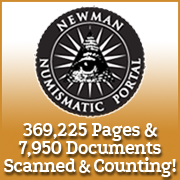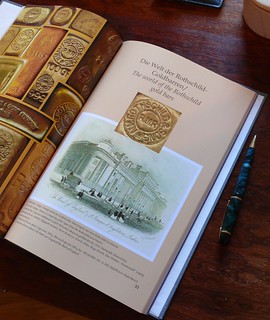
About UsThe Numismatic Bibliomania Society is a non-profit organization devoted to the study and enjoyment of numismatic literature. For more information please see our web site at coinbooks.org SubscriptionsThose wishing to become new E-Sylum subscribers (or wishing to Unsubscribe) can go to the following web page link MembershipThere is a membership application available on the web site Membership Application To join, print the application and return it with your check to the address printed on the application. Membership is only $20 to addresses in the U.S., $25 for First Class mail, and $30 elsewhere. For those without web access, write to: Terry White, Treasurer
AsylumFor Asylum mailing address changes and other membership questions, contact Terry at this email address: terrywhite5475@yahoo.com SubmissionsTo submit items for publication in The E-Sylum, just Reply to this message, or write to the Editor at this address: whomren@gmail.com BUY THE BOOK BEFORE THE COINSale Calendar |
- WAYNE'S WORDS: THE E-SYLUM AUGUST 28, 2016
- KARL MOULTON FALL 2016 FIXED PRICE LIST
- NEW BOOK: POLYMER BANKNOTES OF THE WORLD
- THE BANKNOTE BOOK REVISIONS AUGUST 2016
- NEW BOOK: ROTHSCHILD GOLD BARS 1852-1967
- THE NUMISMATIST SEPTEMBER 2016 ISSUE PUBLISHED
- ARTICLES: AN INVESTIGATION OF ISIS COINAGE
- BOOK REVIEW: ROBERT SCOT: ENGRAVING LIBERTY
- NEWMAN PORTAL REACHES AUCTION MILESTONE
- EARLY DOLLAR RESEARCH ON THE NEWMAN PORTAL
- WHITMAN SEEKS NEW RED BOOK CONTRIBUTORS
- HOBO NICKELS IN THE RED BOOK
- THE M. WALFORD TOKEN OF BIRMINGHAM, ENGLAND
- NOTES FROM E-SYLUM READERS: AUGUST 28, 2016
- DIES SHIPPED TO SAN FRANCISCO SANS MINTMARK
- JOSEPH SAXTON'S 1839 PHOTO FROM THE U.S. MINT
- JACOB POSTLEY (1861-1937)
- ELIASBERG 1815 OVER 2 HALF DOLLAR
- BUILDING THE LILLY COLLECTION, CONTINUED
- THE HIDDEN MESSAGES OF J.S.G. BOGGS
- SELECTIONS FROM BONHAM'S CAREN ARCHIVE SALE
- PROMOTING HOBO NICKEL COLLECTING
- WOMEN WEARING LOVE TOKEN JEWELRY
- THE MYSTERIOUS ANCIENT ORIGINS OF THE BOOK
- LIBRARIES OF THE FUTURE
- RHODES COLLECTION OF COINS OF NORTH EAST INDIA
- ARCHIVES INTERNATIONAL SALE 35 ANNOUNCED
- ROOSEVELT NATIONAL PARK QUARTER LAUNCHED
- QUERY: SIMILAR COIN PAIRS - BARMAID'S GRIEF
- ARTICLE HIGHLIGHTS ROYAL MINT RARITIES
- SHELL'S MR. PRESIDENT COIN GAME TOKENS
- MEDALS OF THE CARNEGIE HERO FUND COMMISSION
- MOE BERG'S PRESIDENTIAL MEDAL OF FREEDOM
- THE PIERRE DE COUBERTIN OLYMPIC MEDAL
- D.B. COOPER RANSOM BANKNOTE OFFERED
- IMPERIAL BANK OF PERSIA NOTES OFFERED
- GIBRALTAR INTRODUCES HASSAN £100 POLYMER BANKNOTE
- POLYMER ADVENT DRIVES INTEREST IN OLDER BANKNOTES
- BANKNOTE SELECTIONS FROM PAM WEST
- RESERVE BANK OF AUSTRALIA READIES NEW $5 BANKNOTES
- THE NEW WOODEN 200-RUBLES BANKNOTE
- RAMEN AS CURRENCY IN AMERICAN PRISONS
- FEATURED WEB PAGE: EARLY GIBRALTAR COINAGE
Click here to access the complete archive
To comment or submit articles, reply to whomren@gmail.com
WAYNE'S WORDS: THE E-SYLUM AUGUST 28, 2016
New subscribers this week include: Gary Conner. Welcome aboard! We now have 2,006 subscribers.
This week we open with a new fixed price list from Karl Moulton, three new or updated books, two scholarly articles on ISIS coinage, and a review of Nyberg's Robert Scot book.
Other topics this week include early U.S. silver dollar research on the Newman Portal, Hobo Nickels, Love Tokens, the M. Walford token, Joseph Saxton, Jacob Postley, and the Pierre de Coubertin Olympic medal.
To learn more about polymer banknotes, Rothschild gold bars, Dale End, Edison Electric's first dollar, barmaid's grief, ramen noodle money, and the Pulitzer Prize for Numismatics, read on. Have a great week, everyone!
Wayne Homren
Editor, The E-Sylum
KARL MOULTON FALL 2016 FIXED PRICE LIST
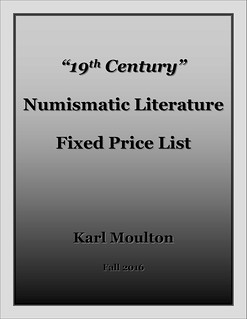 Karl Moulton is pleased to offer an assortment of 19th century items in his latest fixed price list. The pdf is free to download, while a
hard copy is available for $1. Orders can be placed by email or phone. Contact Moulton at numiscats@aol.com or 928-231-0254.
Karl Moulton is pleased to offer an assortment of 19th century items in his latest fixed price list. The pdf is free to download, while a
hard copy is available for $1. Orders can be placed by email or phone. Contact Moulton at numiscats@aol.com or 928-231-0254.
The list is viewable at this link: http://www.earlyunitedstatescoins.com/
uploads/5/5/8/6/55865663/
19thcenturyfplfall_2016.pdf
Karl Moulton
numiscats@aol.com
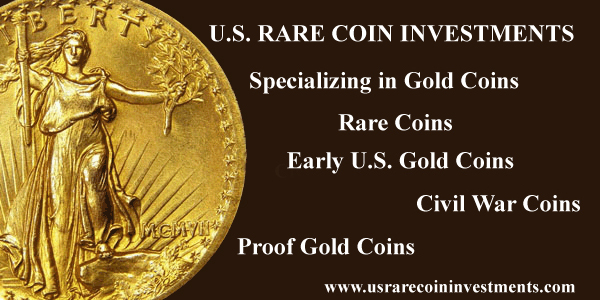
NEW BOOK: POLYMER BANKNOTES OF THE WORLD
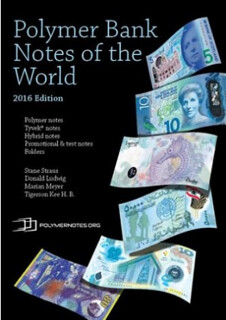 Polymer Bank Notes of The World
Polymer Bank Notes of The World
Your Price: €25.00
Catalog. 2016 Edition. Hardcover. 208 pages. By Stane Straus, Donald Ludwig, Marian Meyer and Tigerson Kee H. B.
The 2016 edition of the award-winning "Polymer Bank Notes of the World" is the definitive reference on polymer bank notes, including sections on polymer issued notes, hybrid issued notes, promotional & test notes and a brand new section on folders.
Postal charges: There is a flat postal charge of €10.00 on all orders that include this catalog (over 1 kg in weight).
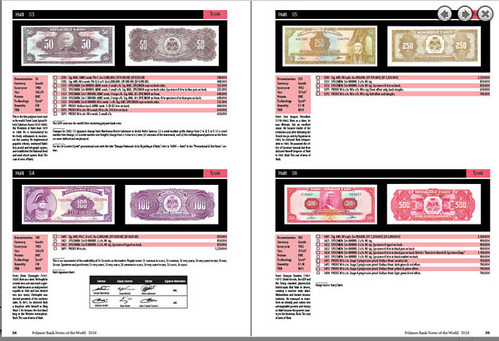
For more information, or to order, see:
Polymer Bank Notes of The World
(http://polymernotes.org/Polymer-Bank-Notes-of-The-World-_p_2914.html)
This is not the first book on the topic; see the earlier 2005 E-Sylum article. -Editor
To order from Pam West, see:
Polymer Bank Notes of the World 2016
(http://www.britishnotes.co.uk/?page=stock_item&categoryid=18&stockid=35096)
To read the earlier E-Sylum article, see:
NEW BOOK ON POLYMER BANKNOTES (www.coinbooks.org/esylum_v08n36a06.html)
THE BANKNOTE BOOK REVISIONS AUGUST 2016

While much of the world was on vacation, August was a very productive month for The Banknote Book, which expanded with the publication of Faroe Islands, French West Africa, and Taiwan.
Subscribers who've seen the release candidates know that Scotland's British Linen Bank and Switzerland are right around the corner. In the meantime, I have a solid week's worth of valuable revisions to announce.
Currently 238 chapters of The Banknote Book have been published as individual high-resolution PDF files. This represents a total of 3,472 pages covering 34,775 types and varieties.
Revisions to the following have been published in the past week:
- Bangladesh (added listing for B353f)
- East Caribbean States (added listings for B236b, B237b, B238b, B239b)
- Georgia (added demonetization date info; various revisions throughout)
- Guyana (updated prices throughout)
- Jordan (added listings for B209cs1/2, B209es1/2)
- Libya (added listings for B516ap, B517ap, B519ap, B520ap, B529as, B537as)
- Malaysia (updated prices throughout; added listings for B103as1/2, B106at, B113as1/2, B113bs, B119bs1/2, B121as1/2, B124as1/2, B135as1/2, B135bs, B138bs)
- Singapore (added listing for B109as)
- Somaliland (added listing for B123c; added prefix info throughout)
- Sudan (added listing for B407b)
- Thailand (added listings for B183c, B187as; improved illustration of B187)
- Uganda (added listings for B157d, B158c)
If you've previously purchased any of the above chapters, you are entitled to free revisions of your content for a period of one year following your purchase. As always, subscribers are entitled to all revisions as long as your subscription is valid.
For more information, or to order, see:
http://www.banknotenews.com/banknote_book/banknote_book.php
To read earlier E-Sylum articles, see:
NEW BOOK: THE BANKNOTE BOOK (www.coinbooks.org/esylum_v18n02a03.html)
THE BANKNOTE BOOK (www.coinbooks.org/esylum_v19n10a07.html)
THE BANKNOTE BOOK CELEBRATES FIFTH ANNIVERSARY
(www.coinbooks.org/esylum_v19n19a03.html)

NEW BOOK: ROTHSCHILD GOLD BARS 1852-1967
Rainer Ahlers, Standard Catalog of Rothschild Gold Bars 1852-1967. Self-published, 2016. 98 pages, 86 color illustrations. 21 x 30.1cm. Linen cloth with sewn binding. 62.50 euros plus postage.
To read the complete article, see:
Book
publication “Standard Catalog of Rothschild Gold Bars 1852-1967”
(www.coinsweekly.com/en/News/Book-publication-Standard-Catalog-of-Rothschild-Gold-Bars-1852-1967/4?&id=4264)
For more information, or to order, see:
www.numisworld.de
THE NUMISMATIST SEPTEMBER 2016 ISSUE PUBLISHED
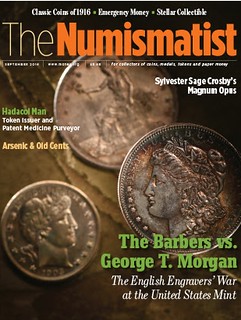 In the September 2016 issue, you'll read about:
In the September 2016 issue, you'll read about:
- The ongoing conflict between the Barbers and George T. Morgan (p. 30)
- The metal composition of 1792 small pattern cents (p. 38)
- The seven versions of Sylvester Sage Crosby’s magnum opus (p. 43)
- An enterprising Louisiana salesman who built a business selling patent medicines (p. 49)
- 125 years of collecting with the ANA (Part 9 of 12) (p. 53)
Contributors include:
- • Eric Brothers
- • Pete Smith
- • Gene Anderson
- • Glynn Kegley
- • Q. David Bowers
- • Steve Benner
- • Grant Shobar
- • Wendell Wolka
- • Allen G. Berman
. . . and, of course, your favorite monthly columnists, including:
• Q. David Bowers • Jerry Cestkowski • Al Doyle • Jeff Garrett • Rod Gillis • Louis Golino • David Lange • Douglas Mudd • Nancy Oliver & Richard Kelly • Mitch Sanders • David Schenkman • Andy Smith
To read the complete issue (membership required), see:
https://www.money.org/digital-magazines
THE BOOK BAZARRE
ARTICLES: AN INVESTIGATION OF ISIS COINAGE
Hadrien Rambach writes:
Regarding the coinage of ISIS, readers should really make the effort of reading French, as a Paris curator has written two excellent articles about it. They can be downloaded for free on academia.com.
Les monnaies créées par Daech, soi-disant Etat islamique, BSFN, décembre 2015

To download the article, see:
Les
monnaies créées par Daech, soi-disant Etat islamique, BSFN, décembre 2015
(www.academia.edu/25243389/Les_monnaies_cr%C3%A9%C3%A9es_par_Daech
_soi-disant_Etat_islamique_BSFN_d%C3%A9cembre_2015)
DAECH : la monnaie comme arme, Carnets de l'AFHE, mars 2016
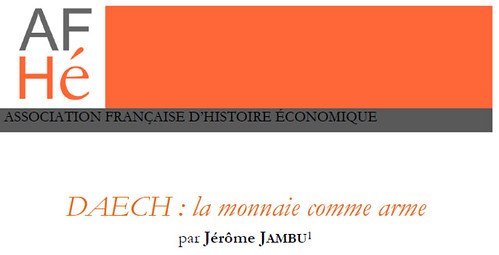
En novembre 2014, le groupe DAECH ou ISIS, soi-disant État islamique, annonçait la création d’une monnaie propre. Des images de pièces ont été diffusées dès l’été 2015 et quelques exemplaires d’un monnayage ressemblant circulent depuis cet automne.
To download the article, see:
DAECH : la monnaie comme arme, Carnets
de l'AFHE, mars 2016 (www.academia.edu/25148019/DAECH_la_monnaie
_comme_arme_Carnets_de_lAFHE_mars_2016)
To read the earlier E-Sylum article, see:
ISLAMIC STATE COINS ON EBAY (www.coinbooks.org/esylum_v19n34a40.html)
BOOK REVIEW: ROBERT SCOT: ENGRAVING LIBERTY
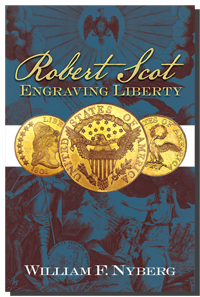 I would like to share information of an excellent book review by Martin R. Clagett on my biography, Robert Scot: Engraving Liberty.
It was recently published in Eighteenth-Century Scotland, the annual publication of the Eighteenth-Century Scottish Studies Society, "an
interdisciplinary and international society examining all aspects of 18th-century Scottish culture and society." The review exposes to academic
historians the role of Robert Scot as Chief Engraver of the United States Mint, along with his vast accomplishments in other areas of engraving for
important events within early America.
I would like to share information of an excellent book review by Martin R. Clagett on my biography, Robert Scot: Engraving Liberty.
It was recently published in Eighteenth-Century Scotland, the annual publication of the Eighteenth-Century Scottish Studies Society, "an
interdisciplinary and international society examining all aspects of 18th-century Scottish culture and society." The review exposes to academic
historians the role of Robert Scot as Chief Engraver of the United States Mint, along with his vast accomplishments in other areas of engraving for
important events within early America.
A brief excerpt:
"William Nyberg has highlighted some very interesting points in regard to the role of the engraver in the narrative of the American Revolution and the New Republic. Nyberg takes particular aim at the immigrant Scottish community and how artisans and merchants from the old country promoted both the ideas of freedom and the basic tenants of the Scottish Enlightenment in their new homeland. He does this all through the agency of Robert Scot.
"The book includes a well-organized and well-arranged set of appendices that effectively demonstrate the areas in which Scot operated, his importance to the history of the Early Republic, and the ways in which he stimulated resistance to the British, support for the Republic, and interest is Scottish philosophy, history, and literature."
"Nyberg draws attention to the importance of symbolic images in order to convey a persuasive message, ensure domestic tranquility, and advance the interest of the new nation. Almost from the moment he arrived in Virginia, Scot used his skills as an engraver to turn paper currency into a vehicle for propaganda and conciliation while, at the same time, deterring the efforts of counterfeiters. In 1776 his note worth Fifteen Spanish Milled Dollars advertised a conquering Virtus subduing a vanquished monarch with the inscription Sic Semper Tyrannis."
The website for Eighteenth-Century Scottish Studies Society:
http://www.ecsss.org/eighteenth-century-scotland/
To read the earlier E-Sylum articles, see:
NEW BOOK: ROBERT SCOT - ENGRAVING LIBERTY
(www.coinbooks.org/esylum_v18n33a04.html)
NEW BOOK: ROBERT SCOT NOW PUBLISHED
(www.coinbooks.org/esylum_v18n36a04.html)
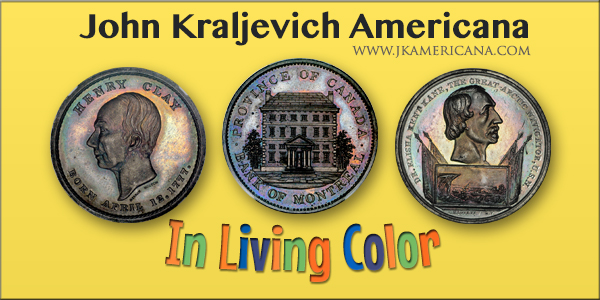
NEWMAN PORTAL REACHES AUCTION MILESTONE
Newman Portal Reaches 90% Coverage of John Adams’ United States Numismatic Literature, Volume One
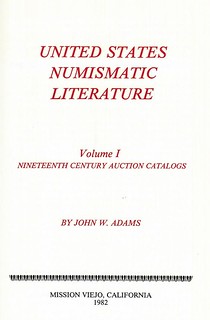 John Adams’ United States Numismatic Literature, published in 1982, set the starting point for researchers and literature collectors
pursuing 19th century numismatic auction catalogs. While a very few already had access to the American Numismatic Society’s Dictionary
Catalogue, a massive set reproducing the card catalog in the ANS library, Adams’ work captured the most pertinent information in a single,
manageable volume. Collectors could now work toward completion of a given series, checking off each catalog as it entered their library.
John Adams’ United States Numismatic Literature, published in 1982, set the starting point for researchers and literature collectors
pursuing 19th century numismatic auction catalogs. While a very few already had access to the American Numismatic Society’s Dictionary
Catalogue, a massive set reproducing the card catalog in the ANS library, Adams’ work captured the most pertinent information in a single,
manageable volume. Collectors could now work toward completion of a given series, checking off each catalog as it entered their library.
The Newman Portal, early on, set a goal of scanning every catalog listed in Adams, and this task is now 90% complete with over 1,000 catalogs scanned to date. The majority of these were scanned at the American Numismatic Society, with Dan Hamelberg also providing important catalogs in the Chapman, Cogan, and other series.
The Newman Portal further acknowledges Martin Gengerke, who provided valuable metadata, in electronic form, derived from his work American Numismatic Auctions. Gengerke’s data considerably simplified the task of entering each catalog into the Newman Portal database. (We were amazed that this information still existed in digital form – originally published in 1985, it has survived several generations in the computer era, reflecting Gengerke’s commitment to preserving the work.)
Auction catalogs on the Newman Portal:
https://nnp.wustl.edu/library/auctioncompanies
EARLY DOLLAR RESEARCH ON THE NEWMAN PORTAL
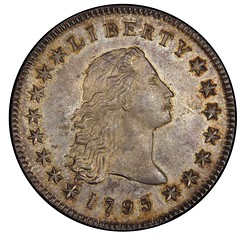 Have you spent any time on the (Eric) Newman Numismatic Portal? As a collector, researcher, and author on the early United States Silver
Dollars 1794-1803, I’ve been following the progress and waiting for certain documents to be scanned and posted to the Newman Portal.
Have you spent any time on the (Eric) Newman Numismatic Portal? As a collector, researcher, and author on the early United States Silver
Dollars 1794-1803, I’ve been following the progress and waiting for certain documents to be scanned and posted to the Newman Portal.
Len Augsburger was kind enough to forward a link to me to the Burdette G. Johnson (BGJ) Invoices for 1940-1947. As most readers know, Eric P. Newman (EPN) and BGJ purchased much of the Col. E.H.R. Green Collection estate, including all of the early dollars 1794-1803.
I was looking through the invoices on the Portal yesterday and early this morning, focusing on collectors and dealers that I know had an interest in the early dollars. One of the obvious collectors was F.C.C. Boyd. His large and mostly complete early dollar collection (by Type and Die Marriage) was sold by Numismatic Gallery at public auction on January 20, 1945 and was titled, Part I / World’s Greatest Collection (WGC) of United States Silver Coins.
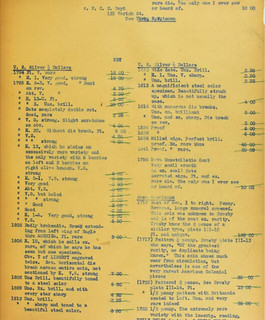 What caught my eye immediately was page 2 of a BGJ invoice to Boyd from 1943 (the invoice was not dated in the Newman Portal, but was
issued between February 11, 1943 and June 29, 1943). The first page of the invoice was for two early dollars with altered dates that were altered “to
1804.” One called fine was $20.00; one in “V. good” was $12.50. Today these might be 10 times these prices, if you can ever find one.
What caught my eye immediately was page 2 of a BGJ invoice to Boyd from 1943 (the invoice was not dated in the Newman Portal, but was
issued between February 11, 1943 and June 29, 1943). The first page of the invoice was for two early dollars with altered dates that were altered “to
1804.” One called fine was $20.00; one in “V. good” was $12.50. Today these might be 10 times these prices, if you can ever find one.
The second Boyd invoice was even more interesting to me, and will be to those who collect by die marriage. The first dollar was a 1795 Flowing Hair Dollar described as, “Haseltine-8. Very fine, extremely rare” at $40.00. This coin was sold as Lot 9 in the 1945 WGC, where cataloged noting, “A very fine specimen with wear on high spots of head and eagle; sharp stars and lettering. This is an excessively rare variety and Hazeltine (Sic) stated “have seen but a single specimen.” It realized $75.00 on a $100.00 estimate, or approximately double what Boyd had paid for it in 1943, only a couple of years earlier. Thus we can add the Col. Green pedigree to this famous coin, which now reads, Col. E.H.R. Green-F.C.C. Boyd-M. H. Bolender (and the Bolender Plate Coin)-Kenneth P. Austin-Alfred and Jacque Ostheimer-H. Roland Willasch-James Mathews-Warren Miller. This important coin is currently for sale as part of the Miller Collection. It is graded PCGS XF40, and is the only 1795 H-8, B-8, BB-18 Dollar graded by PCGS.
The second 1795 FH Dollar on the invoice was listed as, “H. 10. Unc., semi-proof surface at $75.00.” This die marriage was an R-7 at the time, with maybe 3-4 examples known. It was the highest graded example of all examples known at this time, and remains so today by some distance; the next closest example known to me is the Miller Specimen, graded PCGS XF45, which was sold as part of the Miller Collection and now resides in a prominent Eastern collection. There are 13-14 examples known to me for the H-10, B-10, BB-22 die marriage, depending on if one of the known examples is the Haseltine Specimen (1881), or not.
We also now add Col. Green to the pedigree, making it H.O. Granberg-F.C.C. Boyd (WGC)-Harold Bareford-James Matthews-“Various Intermediaries-Dr. Robert Hesselgesser.” It was sold by Ira and Larry Goldberg as part of the extensive Hesselgesser early dollar collection. It’s location is unknown to me today. It has sold in the past at a low six figure price, many multiples of the $75.00 price that Boyd paid in 1943! In 1945, it sold for $150.00 on a $110.00 estimate.
The third item of curiosity for me was a 1795 “Fillet Head” Dollar (today called “Draped Bust” by most) with a “Counterstamped head of the sun (? Best I can tell), described as the “only specimen of this counterstamp we have ever seen.”
The last item on the invoice was a 1799 Silver Dollar, “Counterstamped with head of Benjamin Franklin.” It was called Very fine, and sold for $40.00. If anyone knows anything about this important counterstamped Dollar, please contact me at wdperki@attglobal.net . I have never seen or heard of this, despite a strong interest in counterstamped Early Dollars 1794-1803.
Neither of these counterstamped dollars were part of the 1945 WGC Sale.
I’d like to thank Len Augsburger and Eric Newman for their vision and for posting so many valuable items to the Newman Portal. I can’t wait to see more of “what is out there!” Thanks.
To visit the Newman Numismatic Portal, see: www.newmanportal.org .
To read the complete JR newsletter issue, see:
JR Newsletter: 28 August 2016 (308)
(http://us11.campaign-archive2.com/?u=74a0e3c37d154d935bdeb2daf&id=6c9f9f1e50&e=9b1d009ea9)

WHITMAN SEEKS NEW RED BOOK CONTRIBUTORS
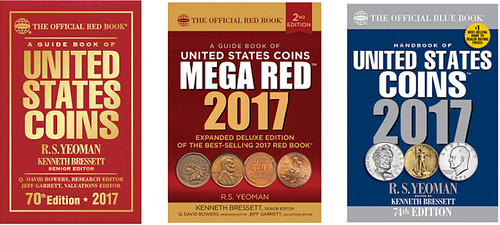
Whitman Publishing, producer since 1946 of the Guide Book of United States Coins (the annually issued retail price guide known as the “Red Book”), announces a call for new pricing contributors. There is an application and screening process, after which newly selected participants will contribute to the pricing of the 71st edition.
“Red Book pricing is compiled and analyzed from the contributions of nearly 100 of the hobby’s leading coin dealers nationwide,” said Whitman publisher Dennis Tucker. “We use data provided by retailers and auctioneers active in the day-to-day business of buying, selling, and trading coins. We also look for market insight from active collectors, investors, and wholesalers.”
Pricers in all denominations and series, including colonial coins and the tokens and medals covered in the Red Book, are welcome to apply. “In particular this year we’re looking for specialists with experience selling modern (post-1964) coins, commemoratives, and bullion,” said Valuations Editor Jeff Garrett.
Interested coin dealers and collectors may apply by requesting a copy of the “Red Book and Blue Book Contributor Questionnaire” from publisher Dennis Tucker, by emailing dennis.tucker@whitman.com.
Pricing contributions are used in the regular-edition Red Book and also the Deluxe Edition, known as “Mega Red.”
Dealers with wholesale experience are also encouraged to submit pricing for the Handbook of United States Coins, the annual wholesale-pricing guide known as the “Blue Book.”
Red Book pricing is done online through Whitman’s proprietary Web-based WhitmanMVP database system. There is a probationary period of one year before pricers are listed by name in the Red Book, pending an editorial review of their contributions by Senior Editor Kenneth Bressett, Valuations Editor Jeff Garrett, Research Editor Q. David Bowers, their special consultants, and the staff of Whitman Publishing.
The deadline for applications is Tuesday, September 6, 2016.
To read the complete article, see:
Whitman Publishing Issues Call for New
Red Book Contributors (http://news.coinupdate.com/whitman-publishing-issues-call-for-new-red-book-contributors/)
HOBO NICKELS IN THE RED BOOK
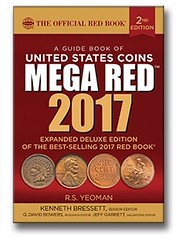 Major news for the hobo nickels hobby was just released. Whitman Publications’ “The Red Book” will include a section on Hobo Nickels in the
“2018 Mega Red” edition due out in March, 2017. Bill Fivaz is assisting by supplying text and photos. “The Red Book” editor, Ken Bressett, will be
selecting from twenty-five photos supplied by Fivaz. Included in the batch of photos are representative examples of each of the quality designation
(QD) categories. With Bo’s “Dicer” coin setting an all-time sales price, that one is definitely planned but selection of the other photo submissions
is up to the editor.
Major news for the hobo nickels hobby was just released. Whitman Publications’ “The Red Book” will include a section on Hobo Nickels in the
“2018 Mega Red” edition due out in March, 2017. Bill Fivaz is assisting by supplying text and photos. “The Red Book” editor, Ken Bressett, will be
selecting from twenty-five photos supplied by Fivaz. Included in the batch of photos are representative examples of each of the quality designation
(QD) categories. With Bo’s “Dicer” coin setting an all-time sales price, that one is definitely planned but selection of the other photo submissions
is up to the editor.
The approved text is as follows:
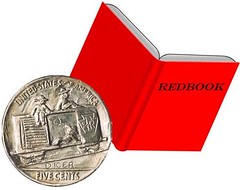 "A "Hobo Nickel" is primarily a Buffalo Nickel that has had one (or both) sides altered by someone outside the Mint to make
it look like another image. It is usually the obverse that has been changed, typically showing a bearded man wearing a derby. Less often, the Buffalo
side was altered to represent a different animal (donkey, horse, elephant, etc.) or a walking hobo wearing a backpack. During the 1930s depression,
hoboes would carve these miniature works of art to sell or trade for a ride on a boxcar, a meal, clothing or a night's lodging. These are very
collectible, with a Superior obverse/reverse carving (reverse illustrated) selling for over $24,000.00 in 2012."*
"A "Hobo Nickel" is primarily a Buffalo Nickel that has had one (or both) sides altered by someone outside the Mint to make
it look like another image. It is usually the obverse that has been changed, typically showing a bearded man wearing a derby. Less often, the Buffalo
side was altered to represent a different animal (donkey, horse, elephant, etc.) or a walking hobo wearing a backpack. During the 1930s depression,
hoboes would carve these miniature works of art to sell or trade for a ride on a boxcar, a meal, clothing or a night's lodging. These are very
collectible, with a Superior obverse/reverse carving (reverse illustrated) selling for over $24,000.00 in 2012."*
For more information about the Original Hobo Nickel Society, see:
www.hobonickels.org

THE M. WALFORD TOKEN OF BIRMINGHAM, ENGLAND
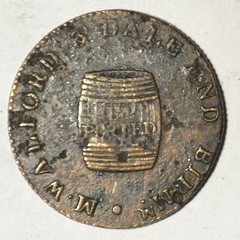
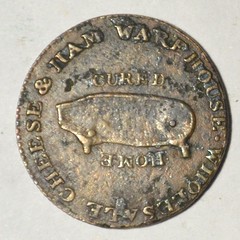
Peter Bertram writes:
Here's a thought on Mr. Michael Sanders token - don't know if this helps or not, but for what it's worth, here 'tis.
This piece possibly dates from the 1700s in Birmingham, England.
I googled "Dale End" and found out that "dale" was the valley "end" of a street in the built-up town of medieval Birmingham. But the key clue was:
"IN THE 18TH CENTURY DALE END WAS THE SITE OF THE BEAST MARKET"
So with a smidge of cross eyed legibility, a bourbon rocks, and a touch of imagination, I read the piece as:
M. WALFORD @ (at) DALE END (in) BIRMm (Birmingham!) [Need your address on a store card, right?]
WHOLESALE CHEESE & HAM WAREHOUSE • in center CURED EMOH (rotate 90° to read HOME DERUC)
Hope this helps - but if not, have a good laugh on me........
To read the complete article, see:
Dale End
(http://billdargue.jimdo.com/placenames-gazetteer-a-to-y/places-d/dale-end/)
Ken Barr writes:
The token is indeed from Birmingham, but Birmingham, Warwickshire, Great Britain.
Batty's "Catalogue of the Copper Coinage of Great Britain, Ireland ..., Volume 2" lists as No. 969:
Obv: A cask inscribed "Imported;", "M Walford 3 Dale End Bir." Rev: A side of Bacon, "Home Cured.", "Wholesale Cheese & Ham Warehouse."
(I believe that M. Walford is the merchant, with 3 Dale End being the street address.)
If there is a more modern listing in a Seaby catalog, I couldn't find it after a quick search.
Bruce W. Smith writes:
The mystery token from M. Walford is certainly not a U.S. Civil War token, though I see it being offered on eBay as such. The token is in fact from England -- late 1700's or early 1800's, a farthing put out by the merchant, M. Walford. The inscription isn't clear in the photo, but reads: M. WALFORD 3 DALE END BIRM.M. Three Dale End is the street address, the town in Birmingham (abbreviated Birm.m). This token was listed in "The Token Coinage of Warwickshire" by William John Davis, published in 1895, as number 1018.
Ed Hohertz writes:
The Walford token is from Birmingham, Warwickshire, England. Attached is a scan of the entry found on p16 in Unofficial Farthings, 1820-1870. R.C. Bell 1975. The guess is that this piece was probably issued before 1838.
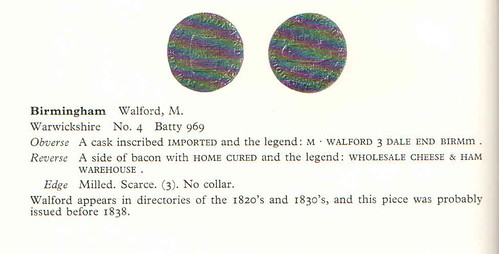
Mike Knight writes:
It is an unofficial farthing from Birmingham in Great Britain. Read "M Walford 3 Dale End BIRMm" - Dale End being a district of Birmingham. Listed as very rare in P & BR Withers 'The Token Book', token 1030. The Withers notes Matthew Walford has been traced at this address 1822-1839, with his wife only listed from 1842.
To read the earlier E-Sylum article, see:
QUERY: PRIMITIVE M. WALFORD & DALE TOKEN
(www.coinbooks.org/esylum_v19n34a21.html)
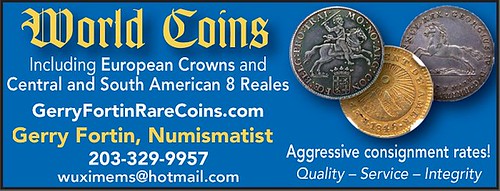
NOTES FROM E-SYLUM READERS: AUGUST 28, 2016
Thoughts on Victorian Half Pennies in Iron Mounts
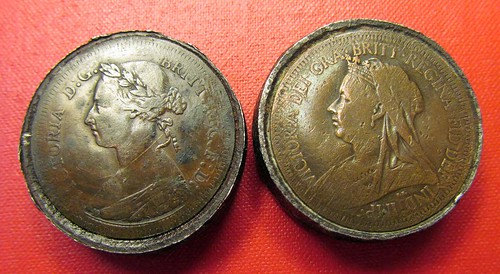
David Pickup writes:
I am not an expert as you know but the “coins” look as though they are weak strikes without a collar for the blank. I wonder if they were done using genuine dies by Mint officials for some reason. I suggest the owner contact the Royal Mint museum and ask for their views.
To read the earlier E-Sylum article, see:
QUERY: VICTORIAN HALF PENNIES ENCASED IN IRON
(www.coinbooks.org/esylum_v19n33a09.html)
Correction: Lange NLG Awards
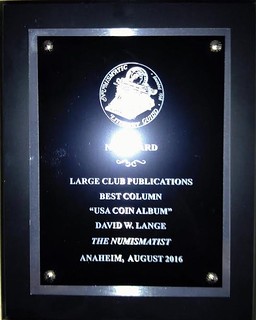 There was an error in the reporting of Numismatic Literary Guild (NLG) awards this year. David Lange writes:
There was an error in the reporting of Numismatic Literary Guild (NLG) awards this year. David Lange writes:
I did indeed get an Extraordinary Merit award for my new book, Coin Collecting Albums, but its title was listed a second time under club publications. My second award was actually for my column "USA Coin Album," which runs in The Numismatist and received Best Column in a Large Club Publication.
To read the earlier E-Sylum article, see:
2016 NLG WRITERS’ COMPETITION RESULTS
(www.coinbooks.org/esylum_v19n34a06.html)
Query: Louisiana Token Information Sought
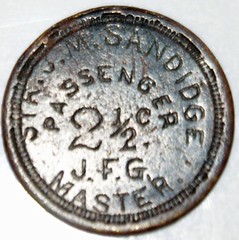 Yosef Sa'ar writes:
Yosef Sa'ar writes:
Here is a recently reported token from an eBay sale, unlisted in any catalog known to me. Described as being for use on the nineteenth
century Alexandria-Pineville, Louisiana, ferry. Uniface, brass, diameter unknown. STR. J.M. SANDIDGE is supposed to be "Steamer J.M.
Sandidge". Readers may comment at https://www.facebook.com/photo.php?fbid=10154295543995560
&set=gm.10154382213289030&type=3&theater
Fugio vs. Continental Dollar Designs
Tony Terranova writes:
Regarding the "Fugio" floor plaque: this is, more properly, a "continental" dollar design.
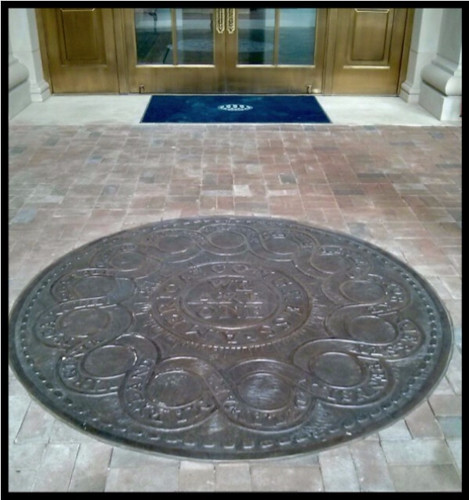
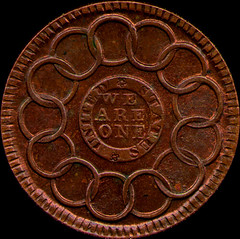
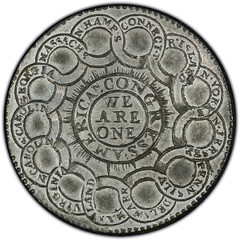
Fugio and Continental Dollar reverses;
To read the earlier E-Sylum article, see:
A TEXAS-SIZED FUGIO CENT (www.coinbooks.org/esylum_v19n34a42.html)
Steve Bishop's Russian Coppers
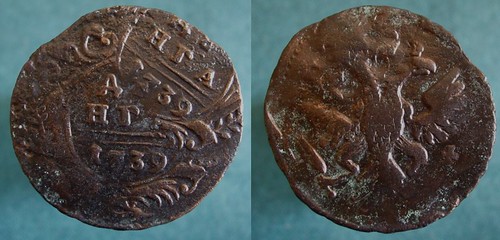
1739 Denga (Half Kopeck) Double Struck
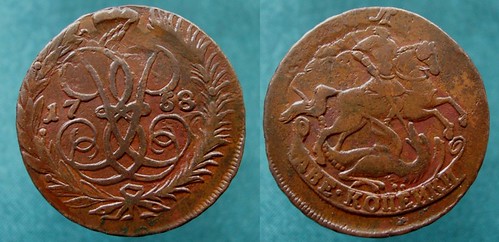
1758 2 Kopecks Overstruck
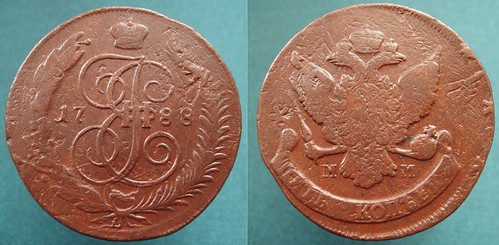
1788 MM 5 Kopecks Overstruck
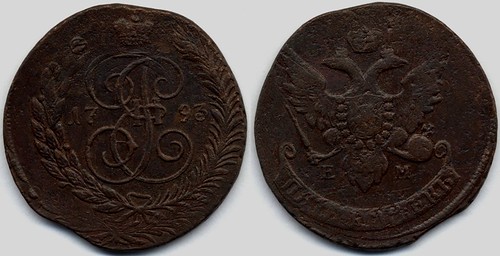
1793 EM 5K Reoverstriking

1795 EM 5 Kopecks
To read the earlier E-Sylum article, see:
WAYNE'S NUMISMATIC DIARY: AUGUST 21, 2016
(www.coinbooks.org/esylum_v19n34a27.html)
And the 2006 Pulitzer Prize for Numismatics Goes To...
Yosef Sa'ar passed along this amusing bio of a writer at the Snopes.com web site:
Jeff Zarronandia is the pseudonym of J. Eff Zarronandia, an American author and journalist who won the Pulitzer Prize for numismatics in 2006 and was one of four finalists for the prize in 2008. He was also the winner of the Distinguished Conflagration Award of the American Society of Muleskinners for 2005.
For Jeff's bio and articles, see:
http://www.snopes.com/author/jeff-zarraonandia/
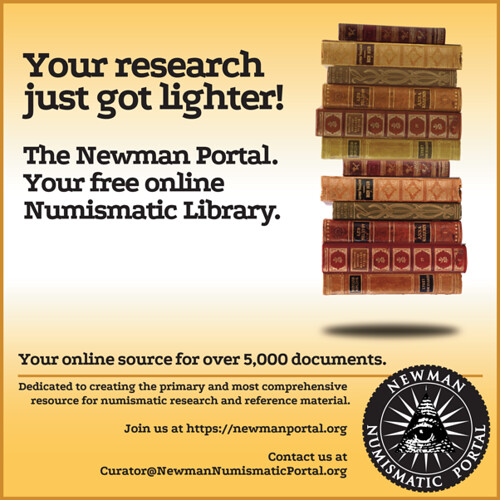
DIES SHIPPED TO SAN FRANCISCO SANS MINTMARK
Bob Julian writes:
The attached letter of May 16, 1870, may be of interest to E-Sylum readers. Breen noted in his Encyclopedia that certain dies sent to San Francisco in December 1869 lacked the letter S. The letter is in reference to these dies.
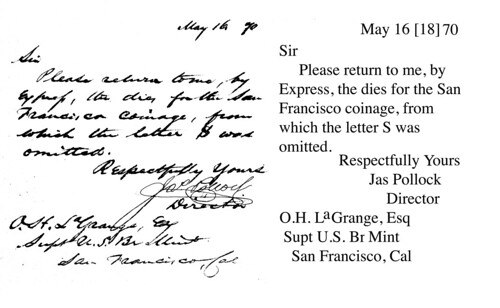
JOSEPH SAXTON'S 1839 PHOTO FROM THE U.S. MINT
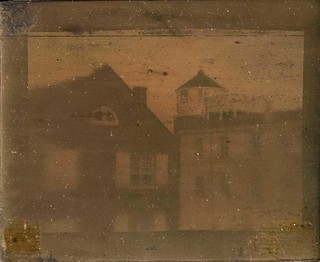
Pete Smith writes:
Above is a photograph of Philadelphia's Central High School and the adjacent Armory. The photo is a primitive daguerreotype made with a lens and a cigar box. It was taken from a window in the second Philadelphia Mint by Joseph Saxton in October, 1839. Saxton was a prolific inventor of his time. One of his inventions used parallel lines to produce images of medals. This is probably not the first photograph produced in America. It may be the oldest surviving photograph.
Kay Olson Freeman writes:
America’s oldest photograph was taken in October 1839 from the Philadelphia Mint building. The photo was taken by Joseph Saxton (b.1799, PA – d. 1873, Wash. DC) who worked at the Philadelphia Mint in weights and measures since 1837.
Since the Daguerre process needs a highly polished silver surface, the Encyclopedia of Photography says Saxton used a silver plate from which coin blanks were usually cut. There is an historic marker at Chestnut & Juniper Streets, Philadelphia, (site of the Mint then) commemorating the photo event.
The Saxton photo is kept at the Historical Society of Pennsylvania and was shown on Philadelphia TV on World Photo Day, Aug. 19, 2016.
Saxton started as a clock and watchmaker.
The earliest American human portrait photograph was a self-portrait taken by Robert Cornelius (1809-1893), also of Philadelphia. Cornelius started as a silversmith and, later, became a very well-known lamp and chandelier manufacturer.
I am very impressed by these two men’s versatility – and the fact that the photos survived.
To read the earlier E-Sylum article, see:
THE EARLIEST KNOWN PHOTOGRAPH (www.coinbooks.org/esylum_v19n34a20.html)
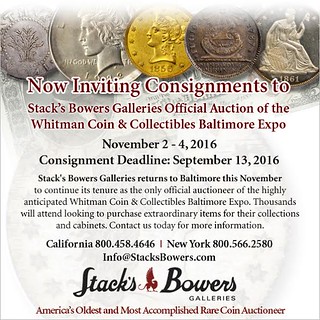
JACOB POSTLEY (1861-1937)
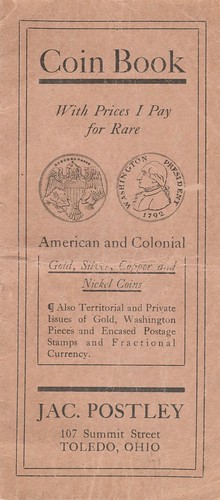 Jacob Postley (1861-post 1937), he was born in New York in June 1861. He graduated High School in 1878. After high school he worked as a
jeweler in New York. On January 15, 1893 he married Elizabeth Byatt (1871-post 1940) in New York City. They had a son Jack Sherman Postley
(1895-1951). His career was largely that of a Jeweler, Pawnbroker, and Coin Dealer. This biographical sketch will be useful to those numismatic
bibliophiles that come across Postley's Coin Book.
Jacob Postley (1861-post 1937), he was born in New York in June 1861. He graduated High School in 1878. After high school he worked as a
jeweler in New York. On January 15, 1893 he married Elizabeth Byatt (1871-post 1940) in New York City. They had a son Jack Sherman Postley
(1895-1951). His career was largely that of a Jeweler, Pawnbroker, and Coin Dealer. This biographical sketch will be useful to those numismatic
bibliophiles that come across Postley's Coin Book.
In the New York City Directory for 1899 he is listed as a Jeweler operating at 613 8th Avenue, New York City, with a residence at 326 West 36th Street.
In 1900, he moved to Toledo, Ohio and operated Pawn Shops there that frequently carried coins which he advertised to buy at a premium publishing his Coin Book. He hired a clerk, Robert F. Colwell to assist him and William T. Talburt as a watchmaker. He applied for membership to the ANA in October 1902 and was given ANA Member No. 448 in November. His address in 1902 was 113 Summit Street, Toledo, Ohio.
He published a 20-page fixed price list with an address at 107 Summit Street, Toledo, Ohio.
He is not listed in Remy Bourne, Premium Paid For Lists. On the back cover he cites many non numismatic items he also buys which clearly shows he operated a curiosity/ pawnbroker shop which also carried numismatic items allowing him opportunity to act as a coin dealer.
He, his wife retired are listed in the Florida State Census and also in the Daytona Beach City Directory of 1935 - 1937 living at 511 Ora Street. He is listed in the Florida State Census as retired and his son Jack S. Postley working as a jeweler. His son Jack returned to Toledo in 1940 with his wife Ruth operating their business Postley's Jewelry Store, 107 Summit Street. Jack S. Postley died in 1951 and is buried in Toledo Memorial Park.
To read the complete article, see:
POSTLEY, JACOB
(https://sites.google.com/a/numismaticmall.com/www/numismaticmall-com/postley-jacob)
ELIASBERG 1815 OVER 2 HALF DOLLAR
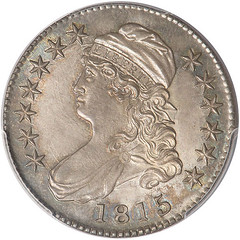
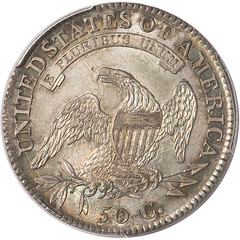
Gem 1815 Half Dollar from the famous Eliasberg Collection pedigreed on holder. This highly sought after gem is in the top 3 or 4 for quality and grade. More importantly it is the very best CAC coin you can own. No 65 or 65+ have been rated by CAC! This is a fantastic coin with full bold strike and natural lightly toned patina. A beautiful addition to any top Bust Half set or a great type coin for the collector who thinks out of the box. The only other 64+ CAC to trade brought 117,500. This is a very nearly flawless coin with the best obverse I have seen on any of the gems. This is a truly fantastic and important coin for the most discerning collector.
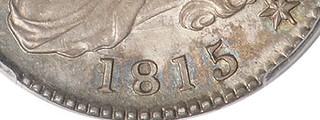
To read the complete item description, see:
1815/2 50C PCGS MS64+ CAC
(www.hlrc.com/Inventory/CoinViewer?id=867375001&c=23)
A single die variety is known for the 1815/2 half dollars, in two distinct die states. The overdate feature is particularly visible at the top of the 5. The obverse has a faint die crack from the curl below the ear, onto the neck. While clash marks are especially visible on the reverse, there is no trace of the reverse die cracks found on later die states.
A young nation, barely four decades old, was undergoing great stress and turmoil in 1815. The War of 1812 was still being waged, and the British capture and burning of Washington, D.C. in August 1814 caused extreme unrest and monetary upheaval. The result of these difficulties was hoarding of hard assets, including gold and silver coins, much as citizens did half a century later during the Civil War. Paper money, even with gold and silver backing, was refused, and commerce was driven strictly by gold and silver. Due to these circumstances, little or no gold and silver was deposited at the Mint, and their supply of copper for cents was exhausted. Mint operations in Philadelphia nearly came to a stand still, and for much of the year, the facility was completely silent. The first coinage for the year had to wait until November.
Only quarter dollars, half dollars, and half eagles were coined during the year. There was apparently also production of large cents dated 1816, as John Wright relates in The Cent Book: "Late in 1815, the first shipment of British copper arrived and was immediately coined into Robert Scot's new design cents bearing the 1816 date." Quarter dollars dated 1815 were minted late in the year, with two deliveries: the first, dated December 16, 1815, consisted of 69,232 coins. The second was dated January 10, 1816, and consisted of 20,003 quarters. The entire mintage of 47,150 1815-dated half dollars was also delivered on January 10, 1816. The only other coinage in 1815 was a limited number of half eagles. Just 635 pieces were struck, and they were delivered on November 3, 1815. Total production for the year, all in the last two months, was 137,020 coins valued at $49,058.75. After a 10 month silence, Mint workmen coined an average of 13,700 coins per week for 10 weeks.
The finest 1815 half dollars are the present early die state piece and the Eliasberg Gem late die state specimen.
To read the complete lot description, see:
Landmark 1815/2 O-101 Half Dollar, MS66
(https://coins.ha.com/itm/bust-half-dollars/1815-2-50c-ms66-ngc/a/1124-2415.s )

BUILDING THE LILLY COLLECTION, CONTINUED
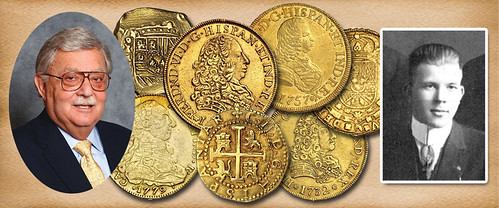
On our visit to Eagle's Nest to deliver the gold coins we had assembled for Mr. Lilly and that he had examined during his visit to Stack's in spring 1954, my father and I were able to examine more closely the growing collection of lead soldiers, his nautical art collection and a small section of his magnificent library.
The museum atmosphere at Eagle’s Nest was a treat in itself. J.K. Lilly's collection was arranged in several rooms and provided a rare experience. He told us stories about his "adventures" in collecting and how he tried to preserve items for future viewing and study.
When we returned to New York, we contacted Clifford T. Weihman who owned collections of $5 and $10 coins extracted from the holdings of E.H.R. Green. We inquired if he was interested in selling his collections to J.K. Lilly who was building a world-class gold coin collection that would be greatly enhanced by this addition. Cliff Weihman asked us how the Farouk Sale had gone and did we have any prices to guide him if he were to sell. We explained to Weihman, that because of the restrictions placed by the Egyptian Government, participation was geared toward dealers and thus the Farouk sale reflected dealer values more than collector values.
Cliff Weihman understood. He told us he would consider selling, if there could be a normal profit added to the prices the Farouk Collection pieces had achieved at auction. He admitted to my father and uncle that after he sold his foreign gold collection with Stack's in 1951, he had moved on to collect not coins, but wines. He was so active in the Grand Chevalier Society, (the foremost fine wine collectors in the world) that he was willing to consider making the sale to Lilly, if he could get a fair price. We reviewed all the records, compared the quality of the coins in each collection (Farouk vs. Weihman) and suggested a price that Weihman agreed sounded fair.
At Stack's we spent days preparing a comparison list for Mr. Lilly and sent it to him for consideration. After a few days we got a call from Mr. Lilly that he would be passing through New York in the fall of 1954 on his way to Florida, and would like to see the Weihman coins.
We arranged with Cliff Weihman to keep his collections in our vaults, so they would be ready for examination by Lilly in the fall. We took full page pictures of the collections of $5 and $10 gold, bound a few sets of actual photographs and had all this ready for show Mr. Lilly's on his fall visit. In more recent years these pictures have been used by gold coin specialists to study varieties.
When Mr. Lilly arrived in New York in the fall of 1954 we showed him the Weihman/Col. Green coins. He was amazed at the size of the collections and that the early gold of each series were nearly complete. There were a good number of Mint State examples, together with Proofs, as Col. Green had sometimes collected more than one. A few dates and mints were missing because choice examples had not been available.
Mr. Lilly liked the coins, and when combined with what he had already purchased he would have an almost complete collection of U.S. gold. He remarked that with the lower denomination gold coins from the Anderson-Dupont, sale and the $20 double eagles from Robert Schermerhorn, he was well on his way toward completion of a United States gold collection. He went on to say, “I believe I decided to collect world gold and United States gold at the right moment as I have been able to take advantage of the skills of those who owned these coins before me, and Stack’s ability to acquire them.” Once again he asked us to set the coins aside and he would arrange for delivery in the spring of 1955.
After he examined the coins from the Weihman Collection we also showed him further Spanish Colonial and other European coins that we had located for his collection. After chatting about his other collecting interests, he left for Florida after wishing us a Happy Thanksgiving.
In early spring 1955 Mr. Lilly stopped at the Stack’s shop as he was passing through New York from his winter in Florida and looked once more at the Clifford T. Weihman collection of U.S. $5 and $10 gold, plus the foreign gold coins, especially the doubloons we were able to assemble. We had an enjoyable in-depth discussion about them and when Mr. Lilly left he told us that his secretary would call to set up the date for delivery to Eagle's Nest.
The date was set as April 12 and I arranged for flights and his secretary made the customary reservation for me at the Indianapolis Athletic Club. On the morning of April 12, Mr. Lilly’s chauffeur picked me up to take me out to Eagle's Nest. As it had been a mild winter that year the spring flowers and trees were already in bloom. Mr. Lilly met me at the door as we drove up, and we proceeded to his study room inside his "Hobby House. We unpacked and started to review the coins I brought with me (this trip I traveled alone as my uncle was on the road gathering a few collections, and my father stayed in the shop to deal with the daily business.)
Since I had been keeping the inventory of the growing gold coin collection, I was able to provide all the information that Mr. Lilly wanted. As we worked on the collection in the early part of the day, Mr. Lilly said that though he liked to devote his time and attention to us on our delivery dates, he was expecting a call about 11 AM and would have to excuse himself for it. I was with Mr. Lilly when his call came.
Mr. Lilly took the call in the room adjoining where we were working and arranging the new purchases. I heard him say, "That's wonderful. I am glad after all the work we did and the time it took to be approved, it was." There was additional conversation, and then Mr. Lilly hung up, and walked back into our workroom with a warm smile,
He walked over to where I was working and said: “History was made to day. I just learned that the FDA has approved our vaccine to fight polio and authorized us to proceed in producing it for the market. Millions of children will be saved from this crippling disease."
I stood up, shook his hand, which had a slight tremor, and congratulated him warmly. It was amazing to be present when Eli Lilly & Co. got the go ahead to produce the polio vaccine. After this short break, we went back to working on the new additions to his collection.
I will tell more about this historic day in my next installment.
To read the earlier E-Sylum articles, see:
BUILDING THE JOSIAH K. LILLY COLLECTION
(www.coinbooks.org/esylum_v19n23a15.html)
BUILDING THE LILLY COLLECTION, CONTINUED
(www.coinbooks.org/esylum_v19n27a13.html)
BUILDING THE LILLY COLLECTION, CONTINUED
(www.coinbooks.org/esylum_v19n31a17.html)
THE HIDDEN MESSAGES OF J.S.G. BOGGS
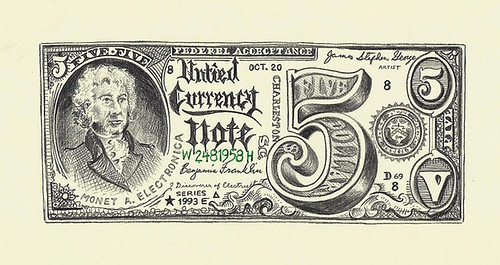
Ron Haller-Williams writes:
The article in the last E-Sylum mentions that your note by J S G Boggs was "personalized by creating a serial number incorporating Homren’s initials" - but I'm guessing that it also incorporated your date of birth. Please let me know if I'm right?
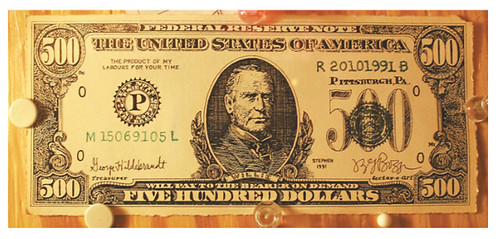
Ron adds:
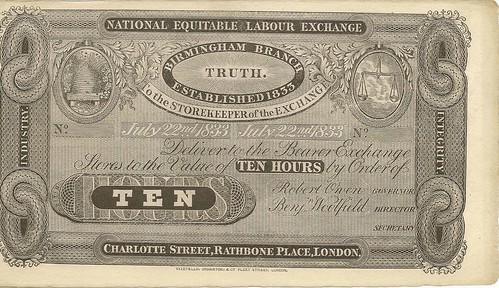
For more information, see:
https://en.wikipedia.org/wiki/Labor_notes_(currency)
https://en.wikipedia.org/wiki/Ithaca_Hours
https://en.wikipedia.org/wiki/Cincinnati_Time_Store
To read the earlier E-Sylum article, see:
CONSIDERING THE CONTROVERSIAL J.S.G. BOGGS
(www.coinbooks.org/esylum_v19n34a18.html)
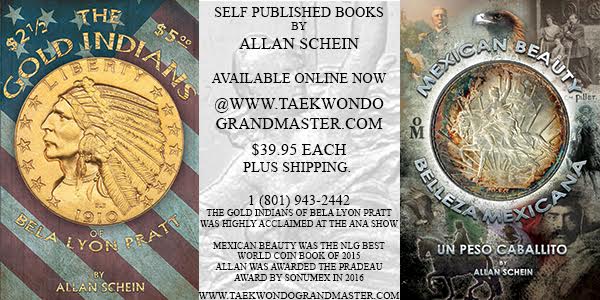
SELECTIONS FROM BONHAM'S CAREN ARCHIVE SALE
1789 Article on Coins of the U.S.
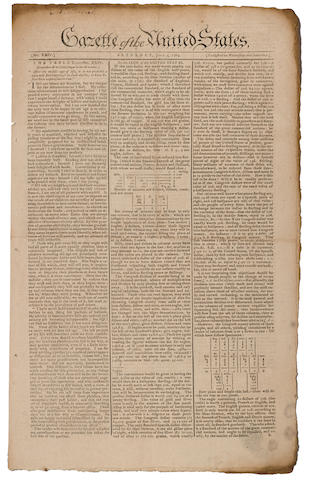 COINAGE. Gazette of the United States. New York: John Fenno, July 4, 1789. No 24. Bifolium (432 x 267 mm). Pale stains in lower outside
corner, edges darkened.
COINAGE. Gazette of the United States. New York: John Fenno, July 4, 1789. No 24. Bifolium (432 x 267 mm). Pale stains in lower outside
corner, edges darkened.
FOURTH OF JULY PRINTING "ON THE COIN OF THE UNITED STATES," being 2 full columns on the front page recommending the decimal system for the division of the U.S. dollar, beginning: "If the unit dollar was made worth exactly 100 dismes of the value of the English half-pence, it would be then 50d. sterling...." It was Thomas Jefferson in 1784 who first promulgated that the American unit of currency should be based on the dollar and divisible on a decimal basis. It was still on open question at the date of this paper. The Act of Congress which founded the Department of the Treasury was not passed until September 2, 1789.
To read the complete lot description, see:
www.bonhams.com/auctions/21962/lot/99/
First Dollar Made By Edison's Electric Light Company
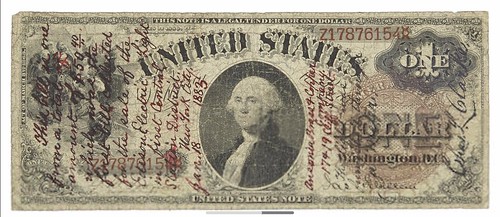
[EDISON, THOMAS ALVA. 1847-1931.] Engraved $1 Bill, Endorsed and Signed by Charles L. Clarke on face and reading in full: "This bill is one from a total amount of $50.40 which was the first bill collected for the sale of Edison Electric Light in first Central Station District, New York City. Jan. 18 / 1883. Ansonia Brass & Copper Company. 17 & 19 Cliff Street. This light was furnished through a Meter. Chas. L. Clarke." Slipped into an album leaf additionally signed twice ("Chas. L. Clarke"), endorsement mostly re-traced in red ink, two small slits for insertion into leaf, bill well-worn but intact, leaf chipped at edges.
TURNING ON THE LIGHTS IN NEW YORK CITY: THE MOST HISTORIC "FIRST DOLLAR" BILL that we locate ever being offered for public sale. Charles L. Clarke (1853-1941) was Chief Engineer of the Edison Electric Light Company and as such responsible for Pearl Street Station in New York, the world's first commercial power plant. Pearl Street began producing power for New York companies in September of 1882 but the customers were not charged until Edison was reasonably confident of continued uninterrupted service. By January they were charging customers, Ansonia Brass was the first to pay, for $50.40 and before the year was out they collected over $9000. Clarke continued to work for Edison Electric Light, which later became part of General Electric.
To read the complete lot description, see:
www.bonhams.com/auctions/21962/lot/232/
PROMOTING HOBO NICKEL COLLECTING
There is a challenge in numismatics and that is to always bring more collectors to the hobby. This insures the growth of the hobby and also supplies new collectors to replace aged ones. Many coin clubs have young numismatist programs (YN programs) which introduce the idea of numismatic collecting to kids at a young age in the hopes they will follow on in collecting as adults. The best approach is through education (coins in the classroom), scout badges, and also indoctrinating the offspring of already collecting adults. The even bigger challenge is reaching adults outside the numismatic community whom have never given any thought to collecting coins, paper money, and exonumia.
Having a club table at a major coin show has given us visibility with traditional numismatic collectors and showcases our niche in numismatics.
The bigger issue and much harder to break through, is reaching those people outside of coin collecting entirely. It was previously predicted that those skull carvings, the ones that have many in our club offering strong opinions on, where going to be one of the tools to mainstream hobo nickels to the masses outside of numismatics. A few years ago a fictional book of short stories wrote about skull coin carvings that were cursed to those who crossed paths with the coins. Paolo Curcio was also featured in a book titled “Skullture”. Skull coin rings and coin pendants have proven to be the most popular hobo nickel design for one jewelry manufacturer and wholesaler. A skull coin carving found in pocket change was also reported in a blog outside of numismatic channels.
There are a few carvers out there that are leaving hobo nickels as tips, placing them in locations for the first passerby to discover, or putting them into circulation. Every time an oddity is discovered in change by an observant person, it is a potential person touched enough by the carving to want to learn more about the item. A number of years ago I received an anonymous letter in the mail with a 2005 Jefferson nickel whose portrait had been altered with the addition of spectacles. These coins were being engraved and then put back into circulation.
Hobo X is not the first to “spend” altered coins. At the age of sixteen, Larry Foster started playing around with coin carving. He had been a coin collector from age five. Foster would add hair or a hat on regular pocket change and then he would have fun spending it. He estimates that it was the mid 1980’s. All the while he pondered if he would ever see his coins again and what would ultimately become of them. With millions of coins out there in change, the odds were against him and he never saw his on work pass his hands again.
Harry Caldwell IV has taken an even grander step forward along these lines. On a few occasions he has left a coin carving in a public place for the first passerby to discover and covet. Geocaching comes to mind, especially when one looks at the mountain view where a carving was left. With no maps to find these and just a photo posted on social media, it makes one wonder when and if the lovely mountain view placement coin will be spotted. Another was placed in a more urban environment and was probably found the same day.
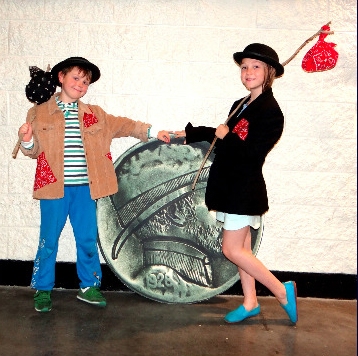
Thanks to Bo Tales Editor Ralph Winter for providing the image and text from the Fall 2016 issue. Thanks -Editor
For more information about the Original Hobo Nickel Society, see:
www.hobonickels.org

WOMEN WEARING LOVE TOKEN JEWELRY
Carol writes:
I am publishing an ongoing series of cabinet cards with women wearing love token jewelry. I have collected these photos for over twenty years now and have an impressive collection. Having acquired Victorian photos of women wearing most of the types of love token jewelry, it is time to share the collection.
Finding these photos requires painstaking hours of searching through photos at antique shows and also on eBay. It can take a week or more of fulltime work (8-10 hour days) to get through all the listings on EBay, some 30,000 to 40,000 listings. Then multiply that by a few searches a year and then over twenty years or so. It is similar to searching for a needle in a haystack. For photos that look promising, each listing has to be opened and then the photos need to be enlarged to see the details. As it turns out, some items that look round in the little thumbnail photos of the eBay search do not appear round when enlarged to 200-250 percent.
The easiest photos to find are men and women wearing stickpins and also men wearing a lapel stud. Quite often the details of the engraving are not visible or are faint due to focus, lighting, and something as small as a dime when blown up in size is going to lose the integrity of the image and fuzz. Knowledge of the styles of other types of jewelry helps in the elimination process. Even when finding an engraved image, since the item is a photo and cannot be turned over to look for the coin side, one has to assume it is a love token based on its appearance and also size/scale of the item.
I plan to show one type of love token jewelry in each issue until I use up all the photos. I estimate that it will take two years with six issues of the Love Letter per year. In the last issue I showcased simple one-coin stickpins worn by both men and women. This month I have shown fancier stickpins which I have named stickpin pairs because it takes two stickpins joined together to make up this style.
This issue we take a look at stickpin pairs, those made up of two stickpins that have been joined together with fine chain. In the more complex types of stickpins the field narrows and we only see women wearing them in the old cabinet card photos. In photos of single stickpins, no safety clutches are visible and they were probably more easily lost. The double stickpins work as a safely against being lost and they are far more decorative. Form and function create a very pleasing visual. These pins cross each other to create an X shape, making it hard to pull free of the dress fabric. Whereas the single versions are placed on a horizontal angle, the pairs are on a forty-five degree angle so gravity also holds them better. If one were unlikely to work free from the fabric, the chain from the other pin would also keep it from dropping to the ground. Stick pin pairs can be made from one, two, or three coins.
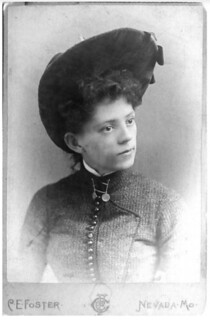
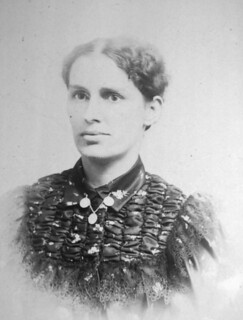
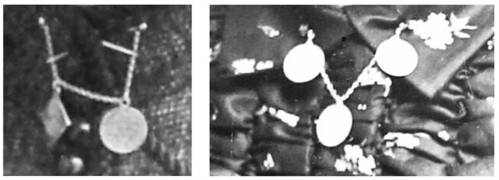
For more information about the Love Token Society, see:
http://lovetokensociety.com/

THE MYSTERIOUS ANCIENT ORIGINS OF THE BOOK
The book is changing. Electronic books, or ebooks, are more portable than their paper counterparts, capable of being carried in their hundreds on a single reader or tablet. Thousands more are just a click away. It can be argued that ebooks are more robust than paper ones: an ebook reader can be stolen or dropped in the bath, but the books on it are stored safely in the cloud, waiting to be downloaded onto a new device. It is not too much to say that books and reading are in the throes of a revolution.
The odd thing is that the current angst over the book’s changing face mirrors a strikingly similar episode in history. Two thousand years ago, a new and unorthodox kind of book threatened to overturn the established order, much to the chagrin of the readers of the time.
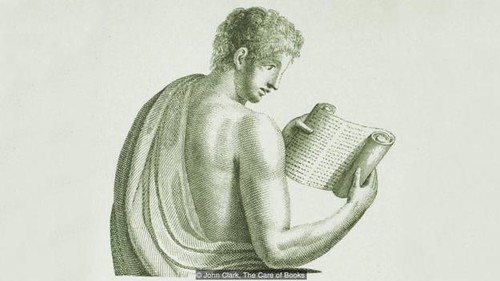
Reading a scroll
Scroll with it
Rome in the 1st Century CE was awash with the written word. Statues, monuments and gravestones were inscribed with stately capital letters;
citizens took notes and sent messages on wax-covered wooden writing tablets; and the libraries of the wealthy were stocked with books on
history, philosophy and the arts. But these were not books as we know them – they were scrolls, made from sheets of Egyptian papyrus pasted
into rolls anywhere from 4.5 to 16 metres (14.76ft to 52.49ft) in length. For all their ubiquity, however, they were not without their
flaws.
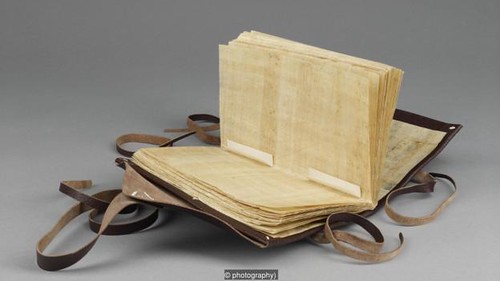
The Newfangled Codex
Shrouded in mystery
Sometime in or before the First Century CE a new kind of book appeared that promised to address the scroll’s shortcomings. The evidence is
sparse but telling: archaeologists have discovered a few key scraps of papyrus whose text unexpectedly continues from the front to the
back, and whose neat margins one might expect to find in a paged book. And that is exactly what these fragments are: they are leaves from
the first paged books the world had ever seen. We know that the Romans called this new kind of book the codex (from caudex or tree trunk,
because of its similarity to their wooden writing tablets), but how the codex came to be in the first place is shrouded in mystery. The
first written mention of the codex appears in the words of a Roman poet named Martial, who encouraged his readers to buy his books in this
new, paged format:
“You who long for my little books to be with you everywhere and want to have companions for a long journey, buy these ones which parchment confines within small pages: give your scroll-cases to the great authors – one hand can hold me.”
Written between 84 and 86 CE, Martial’s sales pitch tells us not only that paged books were known of in the First Century CE but also that some of them, at least, were made from a new material called parchment. This alternative to papyrus, invented in a Greek city-state some centuries earlier, was made from cleaned, stretched animal skins by means of a bloody and labour-intensive process, but its smoothness and strength made it an ideal writing material. Archaeologists have since confirmed Martial’s claims via fragments of parchment codices dated to the First Century – and yet, these few tantalising finds aside, we still know very little about where or why the codex was invented, or who might have done so.
Whatever the truth of the matter, the paged book was a considerable step forward from the scroll. Codices leant themselves to being bound between covers of wood or ‘pasteboard’ (pasted-together sheets of waste papyrus or parchment), which protected them from careless readers. Their pages were easy to riffle through and, with the addition of page numbers, paved the way for indices and tables of contents. They were space-efficient too, holding more information than papyrus scrolls of a comparable size
Yet the people of Rome, and of the lands surrounding it, were split over the merits of the codex. Rome’s pagan majority, along with the Jewish population of the ancient world, preferred the familiar form of the scroll; the empire’s fast-growing Christian congregation, on the other hand, enthusiastically churned out paged books containing Gospels, commentaries and esoteric wisdom. Of course, we know how this story ends: by the Sixth Century, both paganism and the scroll were on the verge of extinction and Judaism had been firmly eclipsed by its younger sibling. Pulled along in the wake of the Christian church, the paged book found its place in history and society.
The ebook of the 21st Century may not have as devout a following as the codex of the ancient world, but it inspires strong opinions nonetheless. Will it displace the paper book in its turn, or will it be the one to go the way of the scroll? Time, and booksellers’ profit margins, will tell.
To read the complete article, see:
The Mysterious Ancient Origins of the
Book (www.bbc.com/culture/story/20160822-the-mysterious-ancient-origins-of-the-book)
LIBRARIES OF THE FUTURE
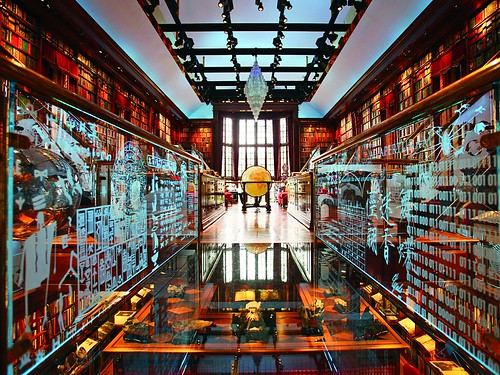
Your idea of a library might be a musty, carpeted room with outdated technology, but don't ditch your library card just yet.
According to David Pescovitz, co-editor at Boing Boing and research director at the Institute for the Future, a Palo Alto-based collective that makes forecasts about our world, it's likely in the coming decades that society's traditional understanding of a library will get completely upended.
In 50 years' time, Pescovitz tells Business Insider, libraries are poised to become all-in-one spaces for learning, consuming, sharing, creating, and experiencing — to the extent that enormous banks of data will allow people to "check out" brand-new realities, whether that's scaling Mt. Everest or living out an afternoon as a dog.
To understand how libraries will change by the mid-21st century, Pescovitz says people need to understand what function they currently serve. At their core, libraries in the information age provide a public means of accessing knowledge, he says. That's what people crave.
The hallmark of future libraries, meanwhile, will be hyper-connectivity. They'll reflect our increasing reliance on social media, streaming content, and open-source data.
Several decades from now, libraries will morph even further.
Pescovitz speculates that humans will have collected so much data that society will move into the realm of downloading sensory data. What we experience could be made available for sharing.
"Right now the world is becoming instrumented with sensors everywhere — sensors in our bodies, sensors in our roads, sensors in our mobile phones, sensors in our buildings — all of which all collecting high-resolution data about the physical world," he says. "Meanwhile, we're making leaps in understanding how the brain processes experiences and translates that into what we call reality."
That could lead to a "library of experiences."
In such a library, Pescovitz imagines that you could "check out" the experience of going to another planet or inhabiting the mind of the family dog.
What probably won't change that much are librarians and the physical spaces they watch over. Pescovitz suspects that humans will always need some sort of guide to make a foreign landscape more familiar. Whether humanity turns that job into one for artificial intelligence is another matter, he says.
"We talk a lot about information and the information age, but really what I think people are looking for is wisdom and knowledge," Pescovitz says.
That has been true for thousands of years and will continue to be true for thousands more, no matter how weird the future might get.
To read the complete article, see:
Libraries of the future are going to change in some unexpected
ways (www.businessinsider.com/libraries-of-the-future-2016-8)
THE BOOK BAZARRE
RHODES COLLECTION OF COINS OF NORTH EAST INDIA
This September, Spink are pleased to announce, will see the second auction of the magnificent collection of Nicholas Rhodes' Coins of North East India. The sale will take place on the 27th in London, and is brimming with some of the finest coins of this region. Spink are thrilled to be handling such a stunning collection amassed over a lifetime of passion and dedication to numismatics. The catalogue itself is sure to become a reference work for numismatic enthusiasts to come as it documents some of the most interesting social movements from medieval Bangal, Tripura, Cooch Behar, Manipur, Assam and Jaintiapur.
Nick Rhodes started to collect coins from an early age and as a seven year old was first taken to AH Baldwin & Sons, receiving excellent guidance from the late Albert Baldwin. In 1962, Nick started collecting oriental coins, particularly the coins of Nepal, which at this time presented the opportunity to build a meaningful collection and provided a fertile field for original research. Over the years he made many journeys to India, Nepal and Bhutan, where he had a large number of friends and contacts.
The culture of the north-eastern states of India is very distinct from that of the rest of India as from the fifteenth century they can be linked to the spread of Brahmanical religion from the Ganga valley. In order to smooth the conversion from tribal religions to the new order, the Brahmins sometimes explained how certain important tribal deities could be identified as Hindu deities. The familiar tribal iconography could thus be seamlessly retained and merely translated into the Hindu context by means of the Sanskrit language. As part of the ceremonies associated with the new Hinduised state, expensive rituals would be performed, and naturally the Brahmins would benefit from offerings and donations.
The Brahmins later realised that it would be in their interests if these donations could be in portable assets, such as precious metals, and for this reason they encouraged the striking of coins. On the occasion of important ceremonies, such as the installation of a new king, the Brahmins dictated that silver and gold coins ought to be struck in the name of the new ruler with appropriate religious invocations celebrating the date of the event.
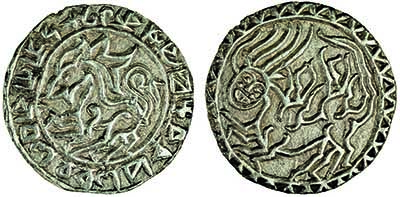
Lot 19
On lot 19, a grotesque human-faced winged dragon appears, which has been interpreted as a unique representation of the Hindu deity, Narasimha, but would once have probably been instantly recognised by the tribal community as a powerful local deity, whose memory is now lost. This coin is extremely fine, and probably unique, its like has never been offered at auction before.
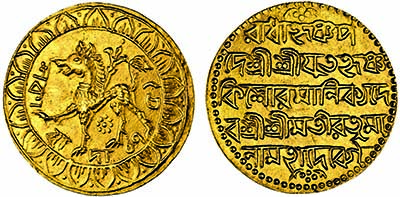
Lot 143
To read the complete pressrelease, see:
The Exceptional Second Auction of the Nicholas Rhodes Collection of Coins of North East India
(www.spink.com/press-releases/the-exceptional-second-auction-of-the-nicholas-rhodes-collection-of-coins-of-north-east-india.aspx/?id=coins&year=2016)

ARCHIVES INTERNATIONAL SALE 35 ANNOUNCED
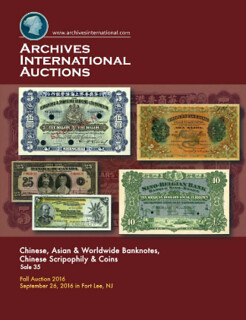 More than 740 lots of Chinese, Asian & worldwide banknotes, scripophily (stock and bond certificates), security printing ephemera and
coins will be sold at a two-session public auction on Monday, September 26th, by Archives International Auctions, in the firm’s offices at 1580
Lemoine Avenue in Fort Lee. The auction will start at 10:30 am Eastern time.
More than 740 lots of Chinese, Asian & worldwide banknotes, scripophily (stock and bond certificates), security printing ephemera and
coins will be sold at a two-session public auction on Monday, September 26th, by Archives International Auctions, in the firm’s offices at 1580
Lemoine Avenue in Fort Lee. The auction will start at 10:30 am Eastern time.
The sale will offer a considerable variety of rare banknotes and scripophily with many desirable items that are rarely offered at auction. For those unable to attend in person, online bidding will be offered via www.archivesinternational.com. Phone and absentee bids will also be accepted.
“We expect this to be an exciting auction due to the considerable number of rare banknotes that we're offering,” said Dr. Robert Schwartz, president of Archives International Auctions. “Many of these notes were obtained in the early 1960’s to 1980’s and haven't seen the light of day since. We're fortunate that these superb collections are finally being let go by their long term owners.”
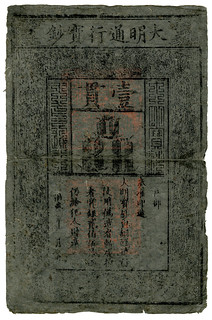 Session I begins at 10:30 am and will feature 266 lots, 190 of which are desirable, Chinese banknotes and scripophily. Session II, to begin
no earlier than 2:30 pm, will comprise of the rest of the world, beginning with rare banknotes from Colombia and ending with notes from Zambia.
Session I begins at 10:30 am and will feature 266 lots, 190 of which are desirable, Chinese banknotes and scripophily. Session II, to begin
no earlier than 2:30 pm, will comprise of the rest of the world, beginning with rare banknotes from Colombia and ending with notes from Zambia.
Highlights will include a Chinese “Ming” banknote dating from the 1360’s, one of the earliest examples of printed currency known; a fabulous collection of Hong Kong & Shanghai Banking Corporation specimen and issued banknotes from an old Canadian estate, all very high grade; and a pair of rare and attractive Chinese Russo-Asiatic Bank and Russo-Chinois banknotes.
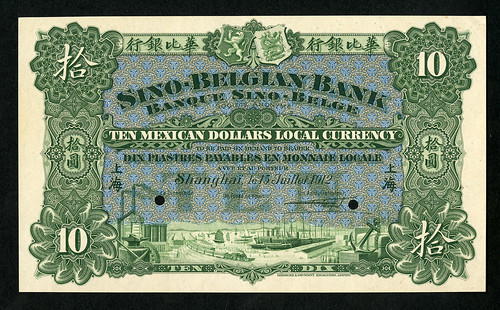
Lot 174 Sino-Belgian Bank
The session will continue with the final offering of rare and colorful Shanghai private scrip notes from an estate find in Denver, Colorado; a new find of Chinese specimen banknotes from the German printer G&D, consisting of a set of 1925 Ningpo Commercial Bank specimens; and an amazing Sino-Belgian Bank $10 Mexican Dollars specimen that's possibly unique in its format.
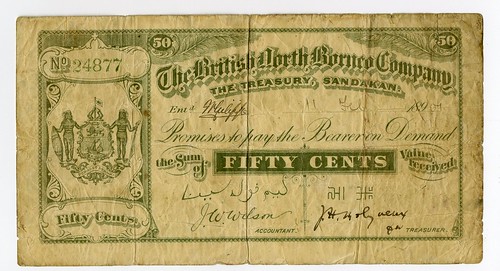
Lot 49 British North Borneo Company
Worldwide banknotes will be highlighted by a pair of scarce circa 1890’s British North Borneo Company banknotes; a 1935 Canadian Banque Du Canada, $25 Commemorative note with a low Serial Number (F000008); and a unique Republic of Chile 1898 Provisional Issue discovery note.
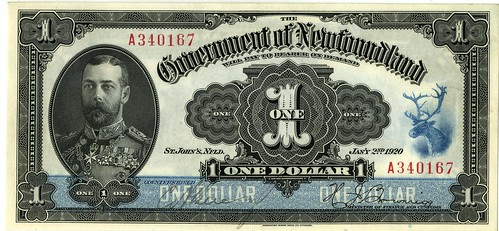
Lot 569 Government of Newfoundland $1 1920
Colombia will be represented by a number of rare and desirable lots, including a Banco Nacional 1899 Provisional Issue rarity; a spectacular $5 specimen from the National Bank of the Danish West Indies; a lovely Government of Newfoundland, $1 1920 issued banknote; and other rarities.
Additional highlights will include a Bermuda Monetary Authority rarity from 2007 of a $2 denomination that was never supposed to be released into circulation, with part of one pack released by accident; a circa 1880s-1890s El Santo Domingo Ferro Carril Central local railroad scrip issue; and a Bank of Ethiopia, 1922 Issue 500 Thalers banknote, one of the finest known.
The auction will include hundreds of additional rare and desirable banknotes in every price range for the beginner to the advanced collector, with highlights that are too numerous to mention here.
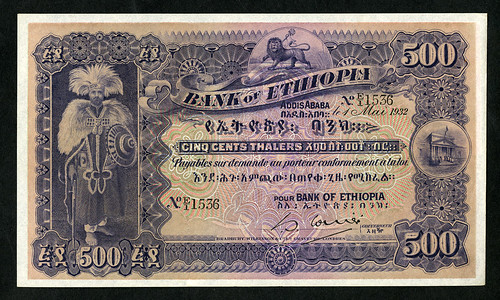
Lot 356 Ethiopia 500 Thalers 1932
Previews will be held Wednesday thru Friday, Sept. 21-23, from 10-5, and on Monday, Sept. 26 and by appointment at AIA’s offices in Fort Lee. For an appointment call (201) 944-4800 or email info@archivesinternational.com. Also, check the AIA website for additional information.
The online catalog for the September 26th auction is on Archives International Auctions’ website and can be viewed via the Archives International Live bidding platform. It can also be viewed as a Virtual Catalog or as a downloadable .pdf. To pre-register for live event internet bidding, you may log on to the Archives International Auctions website, at www.ArchivesInternational.com.
Archives International Auctions will conduct two additional sales this year, in October and December. These will include U.S. and worldwide banknotes, scripophily, coins, and security printing ephemera. AIA is the exclusive auctioneer for the Wall Street Collectors Bourse, an event that features coins, currency and scripophily at the Museum of American Finance in New York City. This year's Bourse will be held on October 21-23, with Session I to be held at the MOAF on Saturday, October 22nd and Session II at AIA’s offices in Fort Lee on Tuesday, October 25th.

ROOSEVELT NATIONAL PARK QUARTER LAUNCHED
The Mint News Blog compiled a group of photos published by the mint of the recent launch ceremony for the Theodore Roosevelt National Park quarter. See the full set online; here are some of my favorites. The event was held at the Painted Canyon Visitor Center at Theodore Roosevelt National Park. Some 900 people attended. -Editor
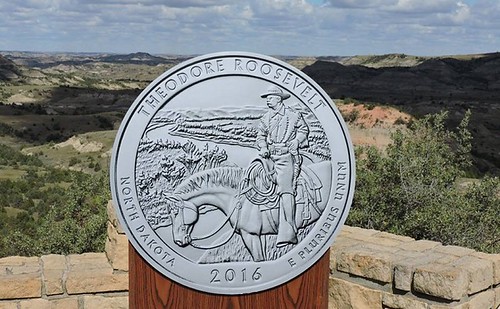
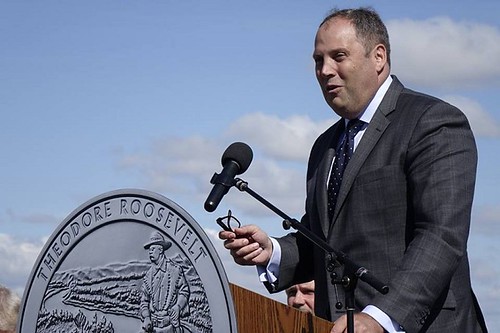
United States Mint Principal Deputy Director Rhett Jeppson
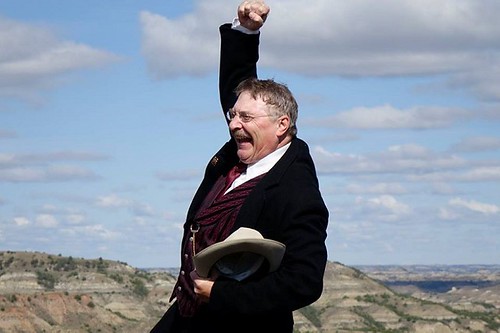
Teddy Roosevelt Riles Up the Crowd
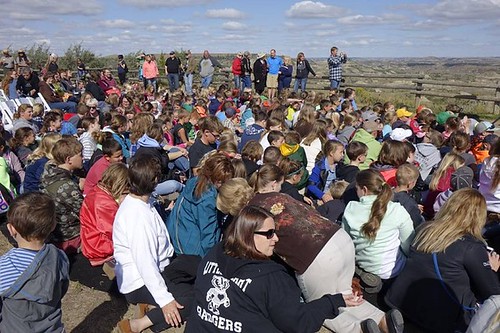
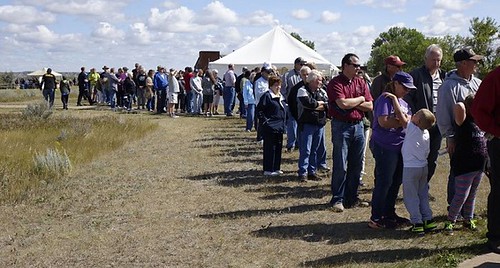
People Queued Up To Buy New Quarters
To read the complete article, see:
U.S. Mint Shares
Images of the Theodore Roosevelt National Park Quarter Launch
(http://mintnewsblog.com/2016/08/u-s-mint-shares-images-of-the-theodore-roosevelt-national-park-quarter-launch/)
THE BOOK BAZARRE
QUERY: SIMILAR COIN PAIRS - BARMAID'S GRIEF
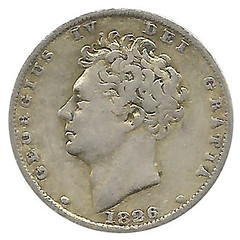
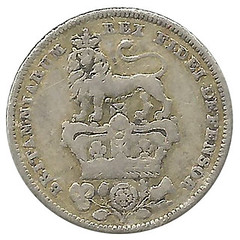
An item in Richard Giedroyc's column "World Coin Clinic" in the June 2016 issue of World Coin News told about the Barmaid's Grief: "The story is likely an urban legend, but allegedly this is the British double florin of 1887 to 1890. The denomination was supposedly confused with the contemporary crown, with barmaids giving improper change for drinks. The value of the double florin was four shillings, while the crown was valued at five shillings. The two coins are similar in diameter. Although it makes a good story it is doubtful this ever took place. The reverse of the double florin depicts heraldry, while the reverse of the crown depicts St. George slaying a dragon."
The story reminded me of an 1826-dated British coin in my collection which I got forty years ago, when I was a beginning collector of world coins. The only catalog I had at the time was Yeoman's Catalog of Modern World Coins which listed coins only from 1850, so I took the coin to a coin shop. The dealer not just told me that the silver coin without denomination was a sixpence, but also pointed out its yellowish color. He explained that this indicated that the coin had been gold plated, so that it could be tendered as payment in a dark pub, passing for a half sovereign which had a similar size.
Both the sixpence and the half sovereign featured the king on the obverse and heraldry on the reverse, and none of them bore a denomination. However, there was a vast difference in their value, a sixpence equalling ½ shilling and a half sovereign 10 shillings.
Attached is the image of my coin, KM-698, which was issued in 1826-1829. These were the last years in which the sixpence was struck without denomination. Later issues clearly state the denomination.
I wonder whether there are other coins that are candidates for the moniker "barmaid's grief."
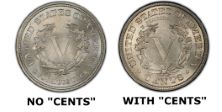
To read the complete article, see:
1883 5C No CENTS (Regular Strike) (www.pcgscoinfacts.com/Coin/Detail/3841)
THE BOOK BAZARRE
ARTICLE HIGHLIGHTS ROYAL MINT RARITIES
Do not always take the small change in your pocket at its face value - it could be worth a lot more than you think.
The Royal Mint has given people a run for their money with a number of treasury mistakes that have resulted in the production of rare coins and interesting stories to go with them.
So while you might dismiss the shrapnel in your pocket as parking change, perhaps you should be taking a closer look at what it could be worth.
The Dateless 20p
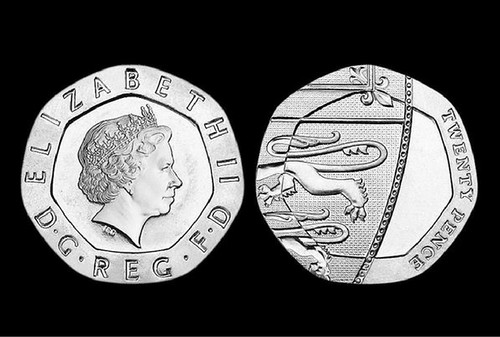
Regarded as the Holy Grail of coin collecting, the 20p saga of 2008 encouraged an entire country to start carefully checking their change. That year, an error at the Royal Mint produced hundreds of thousands of 20p coins that do not have 2008 stamped on them.
The blunder occurred after a redesign of the 20p coin, where the old heads side was used with the new tails design. The Royal Mint does not know exactly how many of the "dateless" coins were produced and released into circulation, but estimates about 250,000 of the 136 million pieces minted.
This is the first undated British coin to enter circulation in more than 300 years and they are worth up to £50 each on auction sites.
The Kew Gardens 50p
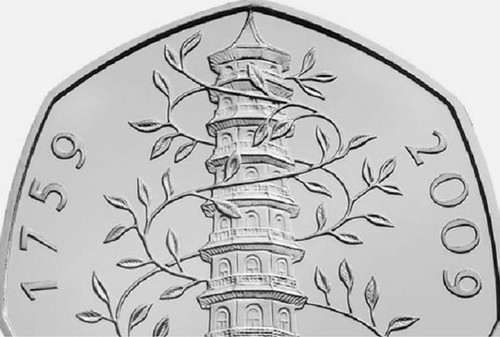
But if you think finding a dateless 20p is lucky, those who have found the coveted Kew Gardens 50p are much more so.
You are twice as likely to find an undated 20p as you are a Kew Gardens 50p, which were released in 2011 to celebrate the 250th anniversary of the Royal Botanical Gardens.
The Royal Mint released just 210,000 of these coins, making it the rarest in circulation. The 2012 London Olympics Coin
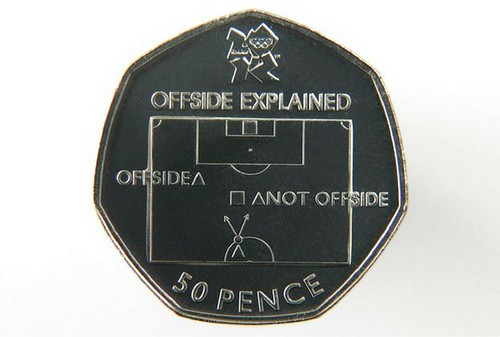
To celebrate the 2012 London Olympics, The Royal Mint released a 50p coin with 29 different designs, some of which were produced more than others.
A full set of coins can fetch around £35 at auction, with a lone football, wheelchair rugby, wrestling and tennis piece being worth £3 to 4 each.
One design on these Olympic 50p coins though is worth gold - the original aquatic design, which depicts a swimmer with water passing over their face, is worth £3,000 on eBay.
Only 600 of these coins were minted before the design changed slightly to make the swimmer's face visible.
The New Pence
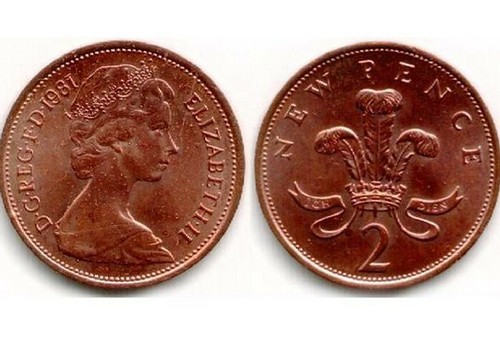
Until 1981, all 2p coins had the words "New Pence" inscribed on the tails side, but a year later The Royal Mint decided to change it to read "Two Pence".
Then, in 1983, the Mint accidentally circulated a small number of coins that bore the original "New Pence" inscription on them. Many of these have been snatched up by collectors, but if you can find one in your piggy bank it could be worth up to £650.
The Silver 2p
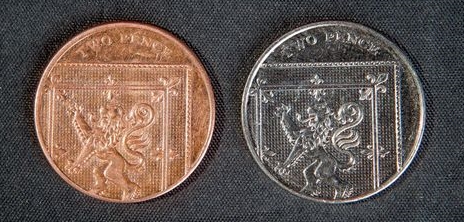
In June, another type of ill-struck 2p was sold at auction for £1,350.
This is down to a change in the material it is made from – instead of copper-plated steel, this rare coin is made from the nickel-plated steel used for 10p coins.
The error was discovered by Royal British Legion volunteers in Wiltshire who thought the coin was a fake when they discovered it in a Poppy Appeal tin last year. When they took it to a bank, The Royal Mint confirmed it was the real deal.
A similar nickel-plated steel 2p was sold at auction for £1,357 in 2014 and another fetched £802 in an eBay auction last year.
To read the complete article, see:
The Kew Gardens 50p and other rare coins that could turn your small change into a fortune
(www.hulldailymail.co.uk/the-kew-gardens-50p-and-other-rare-coins-that-could-turn-your-small-change-into-a-fortune/story-29647221-detail/story.html)
SHELL'S MR. PRESIDENT COIN GAME TOKENS
Bill Goldmann writes:
I built a web page for the 1968 Shell's Mr. President Coin Game promotion with photos and descriptions of the medallions.
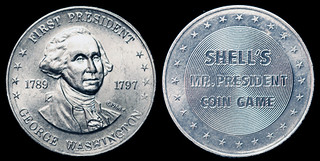 Shell’s Mr. President Coin Game was a fabulous success for Shell Oil Company in 1968 and 1969. A lot of people played and a lot of people
won prizes. Perhaps you did, also? In its wake are millions of aluminum president game coins and millions of bronze prize coins. You can buy them on
auction sites every day. Also in its wake are collectors who try in vain to assemble a complete set of the original game pieces. In my quest to
complete a set I have learned a lot about this promotional game and it can all be found here.
Shell’s Mr. President Coin Game was a fabulous success for Shell Oil Company in 1968 and 1969. A lot of people played and a lot of people
won prizes. Perhaps you did, also? In its wake are millions of aluminum president game coins and millions of bronze prize coins. You can buy them on
auction sites every day. Also in its wake are collectors who try in vain to assemble a complete set of the original game pieces. In my quest to
complete a set I have learned a lot about this promotional game and it can all be found here.
Many people have fond memories of playing the game and winning prizes and that, in itself, is a testament to its success. The Mr. President Coin Game inspired a multitude of similar collect-and-win games which continue to this day, like McDonald’s ‘Monopoly’ game. Such games were also a shot in the arm for numismatics because it got people in the habit of identifying and collecting sets of coins.
The design and execution of this marketing promotion was nothing short of brilliant and it’s crazy that there is so little information available about it. No one can tell me when the game started, when it ended, how many game pieces were issued, or how many prizes were awarded. No one can tell me if this game was nationwide or only released in certain regions. There are many unanswered questions but there are a lot of clues.
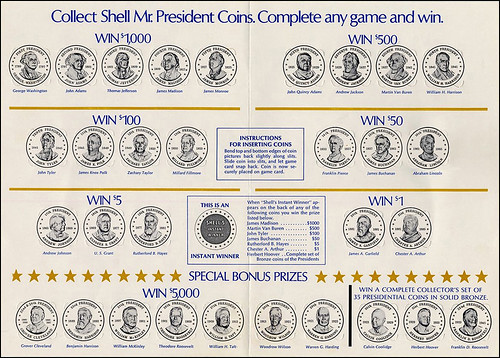
The game was simple on the surface – just collect coins and win prizes. Whenever you filled up with gas at a Shell station you received a paper packet which contained one of 39 different aluminum president coins. You then placed your coin in the matching space provided on the official game card. The game card was divided into sections and if you could get all the president coins in any one of the sections, you won the prize indicated for that section.
Prizes ranged from $1 to $5,000 (that’s about $30,000 in today’s dollars!) and you could also win a beautiful bronze set of presidential medals that came with a mounting board. This is the prize most remembered as over a million of these bronze presidential sets were given away. There were also ‘instant winner’ coins that won a prize without having to collect any additional coins. I remember the excitement of opening up a game piece and seeing SHELL'S INSTANT WINNER on the back.
To read the complete article, see:
Shell's Mr. President Coin
Game (www.billjamie.com/Shell/Shell-Coin-Game/Mr-President-Coin-Game/Mr-President-Coin-Game.html)

MEDALS OF THE CARNEGIE HERO FUND COMMISSION
The first design of the medal in bronze was executed by the jewelry firm of J.E. Caldwell & Co. of Philadelphia. This medal is 3 inches (75mm) in diameter, and the early medals were 3/8’(4mm) thick. The design of the medal went untouched for the first 100 years of its existence. The Commission’s centennial in 2004 prompted a design review, resulting in subtle changes. Notably, medals awarded in the centennial year carried a banner across the base of the obverse: “1904-ONE HUNDRED YEARS-2004”, and the bust of Andrew Carnegie was modified by sculptor Luigi Badia of Somers, N.Y. His initals “LB”are located to the left of the bust on the obverse as well as on the reverse side. Also on the reverse, the seal of Newfoundland was dropped because the colony became a province of Canada in 1949.
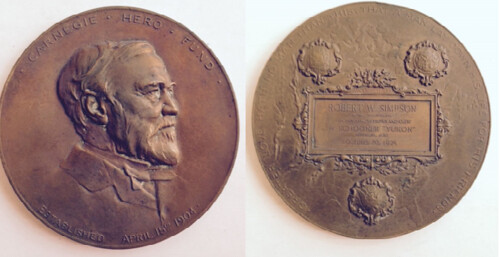
First U.S. Design 1904-2003
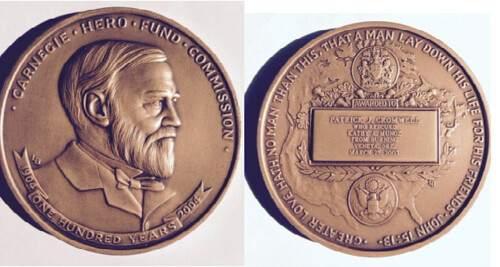
Second U.S. Design 2004-Date
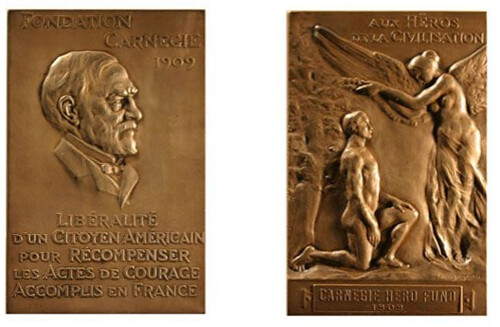
France
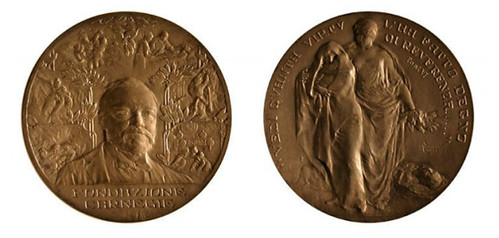
Italy
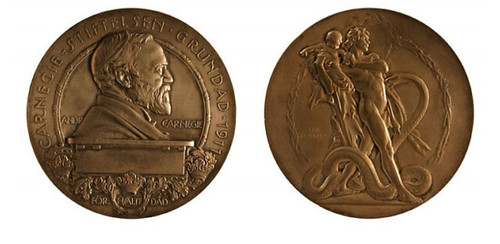
Sweden
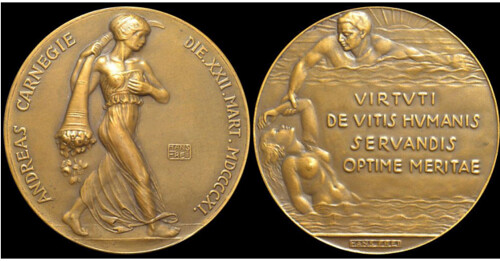
Switzerland
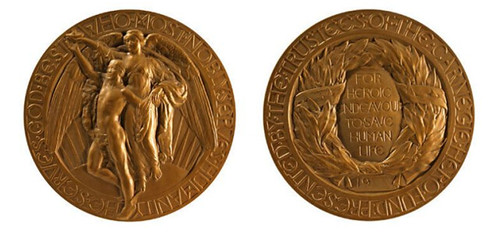
United Kingdom
To read the complete article, see:
Medals of the Carnegie Hero Fund
Commission (www.themedalcollector.com/uploads/Medals_of_the_Carnegie
_Hero_Fund_Commission.pdf)
To read the complete NGC article, see:
NGC Certifies Carnegie Hero Fund Medal
(www.ngccoin.com/news/article/5485/Carnegie-Hero-Medal/)
To read the earlier E-Sylum articles, see:
SILVER 1904 CARNEGIE HERO MEDAL SOLD (www.coinbooks.org/esylum_v19n25a23.html)
CARNEGIE HERO MEDAL WINNER'S GRAVE TO GET PLAQUE
(www.coinbooks.org/esylum_v19n31a22.html)
MOE BERG'S PRESIDENTIAL MEDAL OF FREEDOM
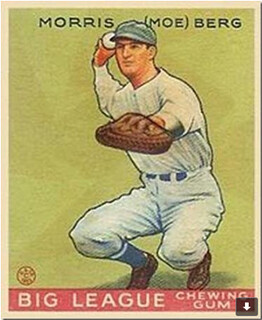 When baseball greats Babe Ruth and Lou Gehrig went on tour in baseball-crazy Japan in 1934, some fans wondered why a third-string catcher
named Moe Berg was included. Although he played with five major-league teams from 1923 to 1939, he was a very mediocre ball player. But Moe was
regarded as the brainiest ballplayer of all time.
When baseball greats Babe Ruth and Lou Gehrig went on tour in baseball-crazy Japan in 1934, some fans wondered why a third-string catcher
named Moe Berg was included. Although he played with five major-league teams from 1923 to 1939, he was a very mediocre ball player. But Moe was
regarded as the brainiest ballplayer of all time.
The answer was simple: Moe Berg was a United States Spy, working undercover with what is today, the CIA.
Moe spoke 15 languages – including Japanese. And he had two loves: baseball and spying.
In Tokyo, garbed in a kimono, Berg took flowers to the daughter of an American diplomat being treated in St, Luke’s Hospital – the tallest building in the Japanese capital.
He never delivered the flowers. The ball-player ascended to the hospital roof and filmed key features: the harbor, military installations, railway yards, etc.
Eight years later, General Jimmy Doolittle studied Berg’s films in planning his spectacular raid on Tokyo
During World War II, Moe was parachuted into Yugoslavia to assess the value to the war effort of the two groups of partisans there. He reported back that Marshall Tito’s forces were widely supported by the people and Winston Churchill ordered all-out support for the Yugoslav underground fighter, rather than Mihajlovic’s Serbians.
The parachute jump at age 41 undoubtedly was a challenge. But there was more to come in that same year.
Berg penetrated German-held Norway, met with members of the underground and located a secret heavy-water plant – part of the Nazis’ effort to build an atomic bomb.
His information guided the Royal Air Force in a bombing raid to destroy that plant.
If the Nazis were successful, they would win the war. Berg (under the code name “Remus”) was sent to Switzerland to hear leading German physicist Werner Heisenberg, a Nobel Laureate, lecture and determine if the Nazis were close to building an A-Bomb. Moe managed to slip past the SS guards at the auditorium, posing as a Swiss graduate student.
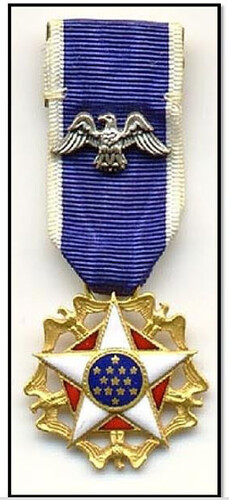 The spy carried in his pocket a pistol and a cyanide pill. If the German indicated the Nazis were close to building a weapon, Berg was to
shoot him – and then swallow the cyanide pill. Moe, sitting in the front row, determined that the Germans were nowhere near their goal, so he
complimented Heisenberg on his speech and walked him back to his hotel.
The spy carried in his pocket a pistol and a cyanide pill. If the German indicated the Nazis were close to building a weapon, Berg was to
shoot him – and then swallow the cyanide pill. Moe, sitting in the front row, determined that the Germans were nowhere near their goal, so he
complimented Heisenberg on his speech and walked him back to his hotel.
Moe Berg’s report was distributed to Britain’s Prime Minister, Winston Churchill, President Franklin D. Roosevelt and key figures in the team developing the Atomic Bomb. Roosevelt responded: “Give my regards to the catcher.”
To read the complete article, see:
True Story – Moe Berg (http://ncsubvets.org/true-story-moe-berg/)
To read the Moe Berg Wikipedia article, see: https://en.wikipedia.org/wiki/Moe_Berg
THE PIERRE DE COUBERTIN OLYMPIC MEDAL
It goes without saying that if you're an Olympian, you've already accomplished an incredible feat. One medal that doesn't always get the attention it deserves, though, is the mysterious Pierre de Coubertin medal. But what is the Pierre de Coubertin Olympic medal, anyway? When was the last time someone got one, and why don't I hear more about this mysterious Olympic prize? Whether or not you bring home a medal from the Olympics, you've gained universal respect for your athleticism, hard work, and dedication just by getting there in the first place — but only select few will walk away with a Pierre de Coubertin medal.
Before we get into the specifics of the Pierre de Coubertin medal itself, it's worth reviewing who Pierre de Coubertin actually is. Coubertin was the founder of the International Olympics Committee (IOC) and is widely considered to be the father of the Olympic Games as we know them today. Though the first modern Olympics were held in 1896, by 1906, they were considered to be the most prestigious athletic games in the world, largely due to Coubertin's vision and mission for the competition. Interestingly, Coubertin was also the first person to introduce the modern pentathlon into the Olympics in the year 1912.
Coubertin's vision for the Olympics stressed an international community where athletes come come together and represent their countries with pride, creating unity among all corners of the world. It's no surprise, then, that the award named after him values sportsmanship above athleticism.
Here's the lowdown on this special award:
The Pierre de Coubertin medal honors athletes who exemplify good sportsmanship. According to Cosmopolitan, it can also be awarded to athletes who display an "exemplary" service to the Games. It was inaugurated in 1964, so it's still a relatively recent part of the Olympics.
Is It Awarded At Every Olympics?
No. In fact, the Pierre de Coubertin medal is awarded by the IOC so rarely, it's only been given out 17 times. While many people are speculating that a Pierre de Coubertin could be awarded at the Rio 2016 Olympics to various athletes, none have been presented with it yet.
To read the complete article, see:
What
Is A Pierre de Coubertin Medal? This Rare Olympic Prize Celebrates Sportsmanship
(www.bustle.com/articles/179554-what-is-a-pierre-de-coubertin-medal-this-rare-olympic-prize-celebrates-sportsmanship)
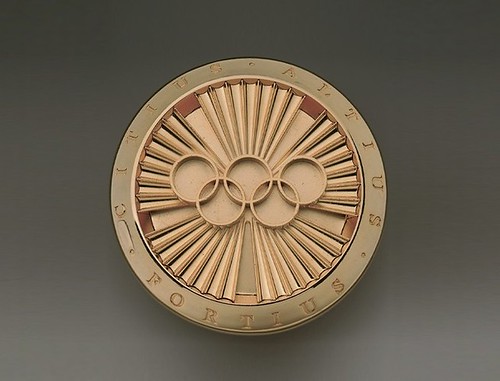
To read the complete article, see:
Will anyone at the Rio Olympics claim the
fourth type of medal? (www.newstalk.com/Will-anyone-at-the-Rio-Olympics-claim-the-fourth-type-of-medal)
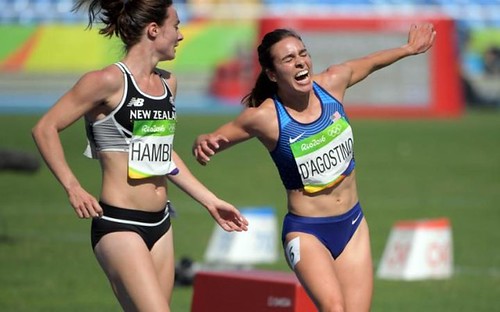
The athletes who captured the essence of the Olympic spirit in acts of selfless kindness have been rewarded for their show of sportsmanship.
New Zealand's Nikki Hamblin's stopped to assist Abbey D’Agostino after the American athlete fell in agony. Earlier in their 5,000m race, D'Agostino had herself helped Hamblin to her feet after a fall that tripped them both.
Hamblin's admirable compassion for her fellow athlete drew plaudits from around the world as the 28-year-old athlete gave up on a chance of a medal to help the stricken runner.
D'Agostino urged to Hamblin to continue racing but the English-born athlete refused to leave the American's side until a wheelchair could be brought to take her away.
Now the IOC has decided to award both the New Zealander and the American the prestigious Pierre de Coubertin award.
Otherwise known as the International Fair Play Trophy, the award has only been handed out 17 times in Olympic history.
Named after the founder of the International Olympic Committee, the award is reserved for athletes, volunteers or officials who have demonstrated the Olympic sprit.
"Winning this award is overwhelming," said Hamblin.
"I am proud that what we did and truly believe that you can be both a competitor and kind and responsive at the same time.
"Everyone comes here to compete but there are a lot of people who don’t achieve that and the journey is really important too. That was one of those journeys and it has gone on to be one of the most important moments of my life."
The award was presented to the athletes in a ceremony held at The Olympic Club.
To read the complete article, see:
Athletes awarded
rare Olympic trophy following touching show of sportsmanship
(www.telegraph.co.uk/olympics/2016/08/21/nikki-hamblin-awarded-rare-olympic-medal-following-touching-show/)
1. LAWRENCE LEMIEUX, 1988
Canadian sailor Lawrence Lemieux was in second place during the Finn class competition at the 1988 Olympics in Seoul, South Korea, when he saw a pair of Singaporean sailors in a nearby race capsize. Realizing they were in danger of being carried out to sea, Lemieux abandoned his race and went to help. After pulling both of the capsized sailors onto his boat, Lemieux waited for more help to arrive before getting back to his own race. Though he eventually finished 11th, he was credited with a second-place finish and awarded the de Coubertin medal.
2. EUGENIO MONTI, 1964
During the 1964 Winter Games in Innsbruck, Austria, celebrated Italian bobsledder Eugenio Monti heard that the British team, Tony Nash and Robin Dixon, had sheared a key bolt from their bobsled. After his run was complete, Monti offered his rivals a bolt from his own sled—and the Brits ended up winning the gold. (Monti and his teammate came in third.) When he was later asked if he regretted sharing the hardware, Monti replied, "Nash didn’t win the gold medal because I gave him a bolt. He won because he was the fastest." Though he received the de Coubertin medal, Monti was probably also pretty happy about taking home his own pair of golds four years later at the 1968 Games.
3. VANDERLEI CORDEIRO DE LIMA, 2004
At the 2004 Summer Games in Athens, Brazilian runner Vanderlei Cordeiro de Lima was leading the men's marathon with just four miles to go. Then it happened: A defrocked Irish priest jumped out of the crowd and detained de Lima for a good seven seconds. Though the delay was brief, it may have cost the athlete a higher finishing spot; he missed gold by more than a minute and silver by more than 40 seconds, but it's hard to say how he would have performed in the last few miles had his concentration not been interrupted. The IOC refused to change the result of the race, but they did give the Brazilian runner the de Coubertin medal in addition to his bronze. Even now, more than a decade later, the recognition continues: de Lima was chosen to light the Olympic cauldron in Rio this year.
4. LUZ LONG, 1936
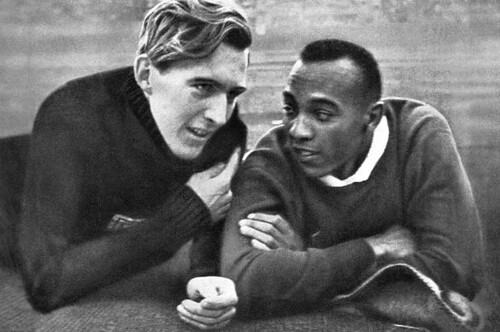
Luz Long, a German long jumper, gave American Jesse Owens a tip about where to start after the American athlete had failed two qualifying jumps. "He helped me measure a foot back of the takeoff board—and then I came down and I hit between these two marks. And therefore I qualified," Owens said in a 1964 documentary. "And that led to the victory in the running broad jump." Long, who was killed in action during World War II, was posthumously awarded the sportsmanship medal for his act—although many believe that the story was completely made up.
5. SHAUL LADANY, 2007
Self-trained Israeli race walker Shaul Ladany has never medalled at the Olympics, but his perseverance and character count for a lot more. As an eight-year-old, Ladany survived the Bergen-Belsen concentration camp. As if that weren't enough horror for a lifetime, he also survived the Munich Massacre at the 1972 Olympics, even though one newspaper report listed him as a fatality. Perhaps it was his brushes with death that spurred Ladany to achieve so much in life. In addition to his impressive athletic feats (one race walking World Championship win and several gold medals in the Maccabiah Games), Ladany speaks nine languages, holds eight patents, has written more than 100 scholarly papers and a dozen books, and is a professor of industrial engineering. In 2007, he added "Pierre de Coubertin Medal Winner" to his long list of accomplishments when the IOC honored him for "outstanding services to the Olympic Movement."
To read the complete article, see:
The Fourth Type of Olympic Medal and
5 People Who Have Won It (http://mentalfloss.com/article/84731/fourth-type-olympic-medal-and-5-people-who-have-won-it)

Archives International Auctions, Sale 35
Chinese, Asian & Worldwide Banknotes,
Chinese Scripophily, Coins and
Security Printing Ephemera
September 26, 2016
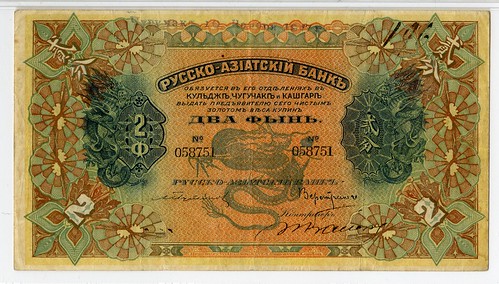
Click the links! Highlights include:
Lot 49: Lot 49 British North Borneo Company
Lot 74: Ming Dynasty Circulating Note
Lot 172: Lot 172 Russo-Asiatic Bank, 1913-1917
Lot 174: Sino-Belgian Bank, 1908-1912 Mexican Dollar
Lot 272: Banco Nacional 1899 Provisional Issues
Lot 307: National Bank of the Danish West Indies 1905 Specimen
Lot 356: Ethiopia 500 Thalers 1932 High Grade rarity
View the Virtual Catalog
Download the Catalog in PDF format
ARCHIVES INTERNATIONAL AUCTIONS, LLC
1580 Lemoine Avenue, Suite #7
Fort Lee, NJ 07024
Phone: 201-944-4800
Email: info@archivesinternational.com
WWW.ARCHIVESINTERNATIONAL.COM
D.B. COOPER RANSOM BANKNOTE OFFERED
Joe Esposito writes:
I thought that readers might be interested in this offering from Lori Ferber Presidential Memorabilia.
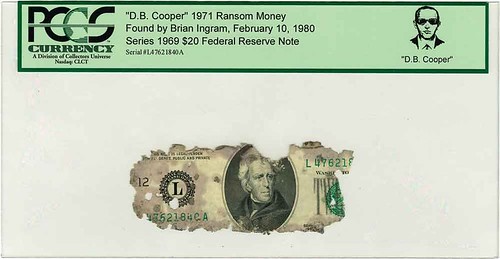
One of the most well-known and infamous incidents in American aviation history, a skyjacker known only as D.B. Cooper, or Dan Cooper, parachuted in a rainstorm from a Northwest Airlines 727 jetliner over rugged terrain somewhere between Seattle, Washington and Reno, Nevada on November 24, 1971. He had been given $200,000 in ransom money in $20 denomination notes. No trace of the legendary Skyjacker was ever found. The only ransom money ever discovered was found on February 10, 1980, along the banks of the Columbia River near Vancouver, Washington by Brian Ingram, then an eight-year old boy on vacation with his parents. The notes were turned over to the FBI. Eventually, a small portion of the notes were returned to the Ingram family.
Authentic "D. B. Cooper" 1971 Ransom Money. Series 1969 $20 Federal Reserve Note. Certified and encapsulated by PCGS Currency with insert picturing the 1971 artist's sketch of the sunglasses-wearing skyjacker. If you're looking for a unique and iconic piece of Aviation history this is it. These notes rarely come up for sale.
We are honored to be able to offer one of the original recovered bills that were found by eight-year-old Brian Ingram along the banks of the Columbia River in Washington on February 10, 1980. This is one of the only known group of currency notes that can be linked to the historic and infamous event.
All the notes from this group were damaged by their exposure to the weather. This bill is approximately 3.75" x 1.5" in size and irregular in shape. It features a near-complete Hamilton portrait, two partial serial numbers, and a near-complete San Francisco "L" Reserve Bank designation.Serial #L47621840A which has been certified and authenticated according to the serial number. One of the largest fragments ever found.
For more information, or to purchase, see:
Rare & Authentic "D. B. Cooper" 1971 Ransom Money Federal Reserve
Note (www.loriferber.com/db-cooper-ransom-money.html)
To read the earlier E-Sylum article, see:
D. B. COOPER MYSTERY CONTINUES (www.coinbooks.org/esylum_v18n48a43.html)
FBI CLOSES D.B. COOPER CASE (www.coinbooks.org/esylum_v19n29a28.html)
IMPERIAL BANK OF PERSIA NOTES OFFERED
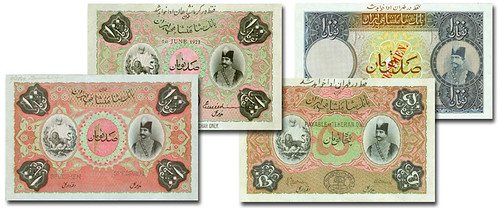
Highlighting the auction so far is an exceptional collection of notes from The Imperial Bank of Persia belonging to Dr. Magid Alkimawi, a prominent collector of rare and exceptional banknotes. Dr. Alkimawi has spent a significant amount of money, time, and effort piecing together some of these very rare notes by way of multiple trips to the Middle East to meet with sellers in person.
The highlights of this collection that will be offered in our upcoming auction include two very rare issued notes: Pick 7, a 50 Tomans note Payable at Teheran, and Pick 8, a 100 Tomans note Payable at Kermanshah. Both notes are rare in any form, but they are exceptionally rare as issued notes. We have been unable to find any public auction records for either of these notes in issued form. These are the first we have handled and are likely to be the last for quite some time, possibly ever. Both notes have been certified by World Banknote Grading with the 50 Tomans being graded a 25 Qualified and the 100 Tomans receiving a 35 Qualified. These examples show extraordinary detail, have great registration, and retain their original color. Striking hand written signatures are present and bold overprints are also seen.
Also featured in Dr. Alkimawi's collection are two additional rare specimen pieces. One of them is a Pick 8 100 Tomans in high grade Gem PMG 66 EPQ. The BWC design is as flawless and problem free as possible, with perforated specimen punched above each of the signature panels. A printer's annotation dated September 1911 is in the top margin towards the left of center. The other specimen is Pick 17, the 100 Tomans example issued between 1924 and 1932. This BWC design has much bolder inks as the design technology had improved from the series prior. A diagonal red specimen overprint is seen at center. Cancelled is perforated above each of the signature panels. The bold ink colors are blue, brown, yellow, green, and a light violet. Minor handling has resulted in PMG grading the note Choice About Uncirculated 58. The back mentions that this particular specimen was designed with the Payable at Teheran overprint. This design is very pleasing and is one of the rarer specimens from this bank.
All of these notes feature vignettes of Nasr ad-Din Shah and the Lion and Sun motif holding Arms. The sun in the Lion and Sun motif is believed to resemble Mithra, the sun god in Zoroastrian beliefs. The lion is symbolic of virility and strength. This combination is deep rooted in Persian culture and is often associated with Royalty. The Qajar Dynasty made the Lion and Sun the official symbol of the royal house. Naser al-Din Shah was part of the Qajar dynasty. Even though he was assassinated in 1896, his portrait remained on these notes for more than 25 years after his death, and these Imperial notes are often referred to as Qajar notes.
Established in 1889, the Imperial Bank of Persia was Iran's first attempt of establish a modern banking system. Seventeen years earlier, a baron named Julius de Reuter signed an agreement with the Iranian Government in Tehran that granted him permission to start a Bank or establishment of credit if the government ever decided to allow anyone to do so. Red tape and opposition by many different agencies caused this to take quite a bit of time. Eventually a royal charter was issued in September 1889 authorizing the establishment of the first bank but with many restrictions including a mandate that all branches be located within Iran, that the board of directors had to be in London and that more than 50% of the capital had to be issued in the United Kingdom. Ultimately this made the Imperial Bank of Persia an exclusively British bank even though Iran was not a British colony.
Reza Shah Pahlavi took control of the country when he was selected as Prime Minister of Iran in 1923. The desire for Iran to have full control of their banking system was the beginning of the end for the Imperial Bank of Persia. The bank's ability to issue notes was taken away in 1932. Many of the notes were destroyed over time by the Imperial Bank of Persia. Of the issued notes sent into circulation, only 236 of the 50 Tomans, and 153 of the 100 Tomans remain that were not destroyed by the government; they survived because they were either stolen, or never returned to be destroyed. The last known accounting of these numbers was in 1931 so it is likely that those numbers have since decreased dramatically, and it is likely that just a handful or less survive.
These notes will be offered in the live session of our official January NYINC World Paper Money auction to be held at the Waldorf Astoria.
To read the complete article, see:
Rare and Unseen Imperial Bank of Persia Notes Slated for January
NYINC Auction (www.stacksbowers.com/News/Pages/Blogs.aspx?ArticleID=2234)
GIBRALTAR INTRODUCES HASSAN £100 POLYMER BANKNOTE
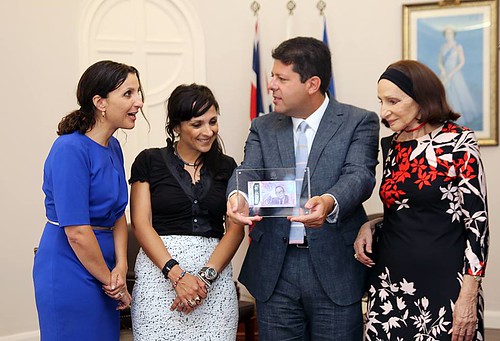
The Chief Minister and the Financial Secretary have presented the family of the late Sir Joshua Hassan with the first copy of the new £100 note which commemorates his birth.
The note is the first ever £100 sterling banknote to be produced in polymer, as well as Gibraltar's first sterling banknote to be produced in this material.
The government says the note will have a smoother feel than traditional banknote paper but it will be more durable and will stay cleaner for longer.
Mr Picardo says the new polymer banknotes are at the cutting edge of banknote design and the security features are second to none.
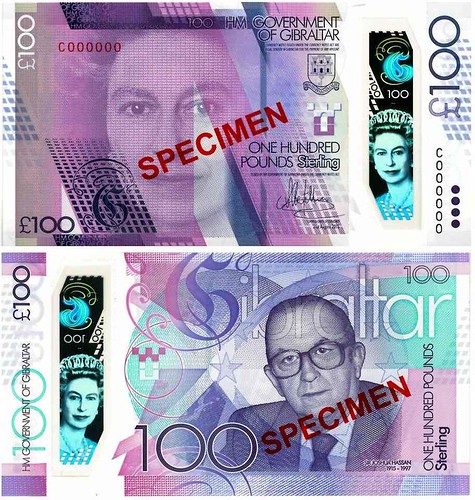
To read the complete article, see:
First Sir Joshua Hassan £100 polymer
banknote presented to family (www.gbc.gi/news/first-sir-joshua-hassan-100-polymer-banknote-presented-family-33011)
Sir Joshua Hassan, Gibraltar's first Chief Minister, dominated the life of the Rock throughout a political career that spanned 40 years. With his encouragement, Gibraltarians, who for nearly three centuries had passively fulfilled their role as loyal servants of the British garrison, developed a proud sense of identity and a desire for emancipation that continues to cause headaches both in Whitehall and in Madrid.
He was the first Gibraltarian leader to assert that only the inhabitants of the Rock had the right to decide their future. He was, in that sense, in the mould of a number of leaders throughout the British Empire who contributed to tbe process of post-war decolonisation. One of the last steps in that process took place in Hong Kong on the day he died.
Twice in the 1960s, Hassan - regarded as a radical if not a revolutionary - led petitioners from the Rock to testify in New York before the United Nations Committee on Decolonisation, insisting that the vast majority of his compatriots wanted to remain British. In 1967 he put his principle to the test with a referendum on the colony's future. The public's verdict was overwhelming - 12,138 votes in favour of remaining with Britain, and only 44 votes against.
David Pickup writes:
Gibraltar is not a colony it is British Overseas Territory. The inhabitants of Gibraltar have same right to self-determination as people of the two Spanish enclaves in North Africa and anyone else. Gibraltarians have a long standing self-government and have demonstrated their wish to remain British. I do not think many British people live in Spain and work in Gibraltar. Many Spanish people live in Spain and work in Gibraltar.
The outcome of the EU referendum will not affect Britain’s commitment to Gibraltar and its people. Although post-Brexit the future will be challenging, many European countries have links with former colonies and territories that have various different legal arrangements with Europe.
The outcome of the EU referendum will not affect Britain’s commitment to Gibraltar and its people. Many European countries have links with former colonies and territories that have various different arrangements with Europe.
The coinage of Gibraltar is fascinating; there is an interesting article on the early tokens on the Gibraltar National Mint website.
To read the complete article, see:
Obituary: Sir Joshua Hassan
(www.independent.co.uk/news/people/obituary-sir-joshua-hassan-1248542.html)
POLYMER ADVENT DRIVES INTEREST IN OLDER BANKNOTES
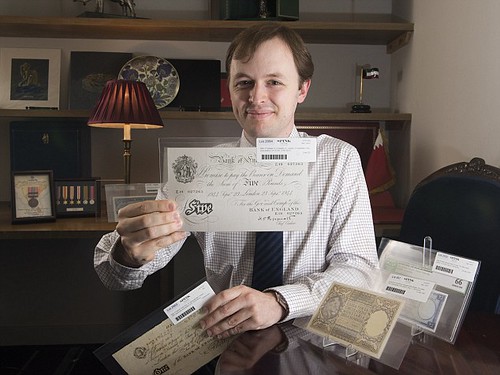
Andrew Pattison with a 'White Fiver' from 1944
The old paper £5 is being replaced with a plastic note from next month – a move that should renew collector interest in rare early fivers.
The new note is made of a polymer, not paper, and should be harder to forge or accidentally destroy.
Late 18th and early 19th Century fivers are rare – most people of this time never saw paper money in an era when average earnings were less than £20 a year.
Today, if you stumble across one of these early so-called ‘White Fiver’ notes it may be worth £10,000 or more.
They were printed on white paper and individually signed. The notes were about twice the size of the new plastic one that will be just five inches wide – 15 per cent smaller than the current fiver.
Andrew Pattison, banknote specialist for international auction house Spink, says: ‘There has been a real surge of interest in collecting old banknotes in the past few years. This new £5 may help to boost their appeal.’
He points out that the British fiver was produced in black ink on white paper until 1956. A year later, the first blue note was released along with pictures – Britannia on one side and a lion on the back.
These notes are known as the ‘Lion & Key’ or ‘Helmeted Britannia’ and were legal tender until 1967.
Pattison says: ‘Although the early notes may not always be interesting to look at, this does not affect their price – it is the history behind them that creates the value.’
Among his favourites is a 1914 fiver that belonged to Lord Montagu of Beaulieu who was a passenger on the SS Persia that was torpedoed by a German submarine in December 1915 during the First World War.
Fortunately, the owner survived – though sadly his mistress Eleanor Thornton did not. Thornton’s figure is immortalised as the model behind the ‘Spirit of Ecstasy’ that adorns all Rolls-Royce car bonnets.
Pattison says: ‘Lord Montagu was in the water for 32 hours before being rescued. He later wrote a letter to the banknote manufacturer Portals congratulating it on the quality of its paper.
‘Unlike other papers he had been carrying at the time, the banknote survived. We sold it two years ago for £800.’ Pattison points out that the first couple of new notes issued are historically given to the Queen – so she will be the first to have plastic fivers in her purse.
Pam West, dealer at Pam West British Notes in Sutton, Surrey, believes collectors should invest in the best quality notes that they can afford.
She says: ‘The last white fiver was issued in December 1956 and remained legal tender until 1961. Top quality examples from the 1950s can sell for £300 but if well used they will fetch less than £100.
A good place for note collectors to start is to dig out a copy of English Paper Money by Vincent Duggleby, edited by Pam West. The book is currently out of print but a new edition is due out early next year.
To read the complete article, see:
As the Royal Mint goes plastic, interest in early banknotes is set to rise: Why the fiver's your new flexible friend
(www.thisismoney.co.uk/money/news/article-3761394/As-Royal-Mint-goes-plastic-early-banknotes-set-rise-fiver-s-new-flexible-friend.html)
BANKNOTE SELECTIONS FROM PAM WEST
1937 Guernsey Ten Shillings Banknote
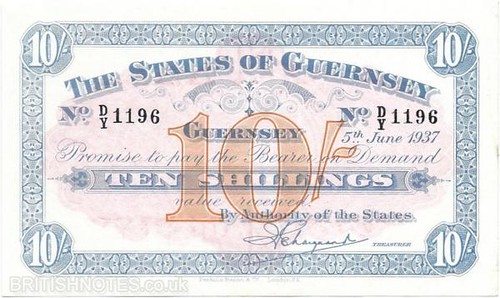
1915 Provincial Bank of Ireland One Pound Note
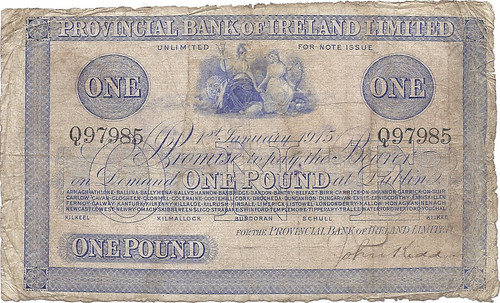
Provincial Bank of Ireland One Pound Note
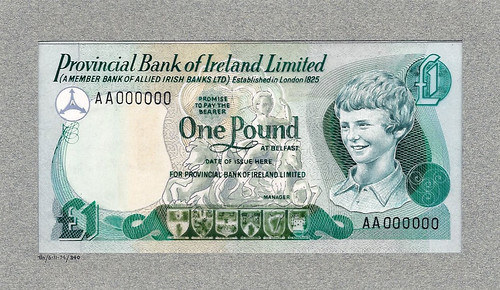
1895 Isle of Man Dumbells Banking Co One Pound Note
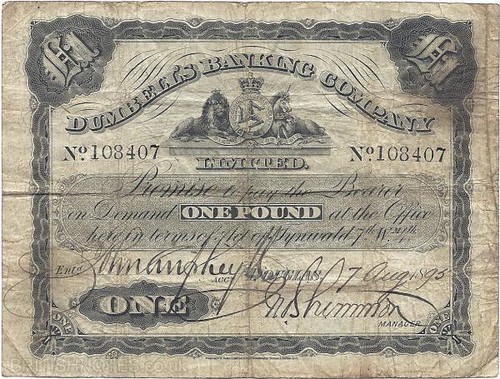
1944 Isle of Man Lloyds Bank Limited One Pound Note
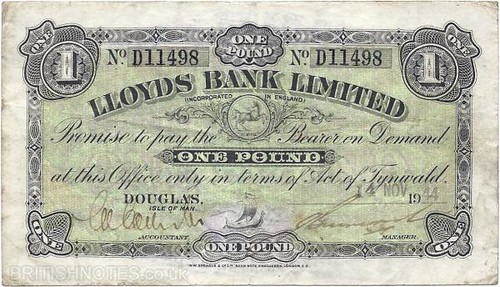
To visit Pam West's website, see:
http://britishnotes.co.uk/
RESERVE BANK OF AUSTRALIA READIES NEW $5 BANKNOTES
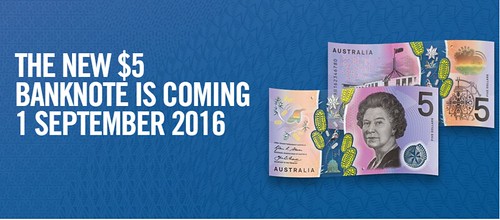
To coincide with the issuance of the next generation of Australian banknotes, the Reserve Bank of Australia will offer two commemorative products to the public:
- a ‘Next Generation of $5’ commemorative folder containing one new $5 banknote at a recommended retail price (RRP) of $10.95; and
- a ‘Two Generations of $5’ commemorative folder containing one first polymer $5 banknote and one new $5 banknote at a recommended retail price (RRP) of $19.50.
Both folders contain standard uncirculated banknotes only. The commemorative products will be available for purchase at Australia Post outlets.
Further information about the new banknotes can be found on our website (www.banknotes.rba.gov.au).
Don adds:
The prices mentioned are in Australian dollars. One Oz dollar equals 0.77 U.S. cents.
For more information, or to order, see:
http://banknotes.rba.gov.au/
THE NEW WOODEN 200-RUBLES BANKNOTE
The monument to 200-ruble banknote was installed in the Kazan Kremlin. It was created in honor of the future banknote of nomination at 200 rubles. The wooden banknote will be installed in front of the Cannon yard and the Kul Sharif Mosque until the end of the campaign in support of Tatartsan as a symbol on the new banknote.
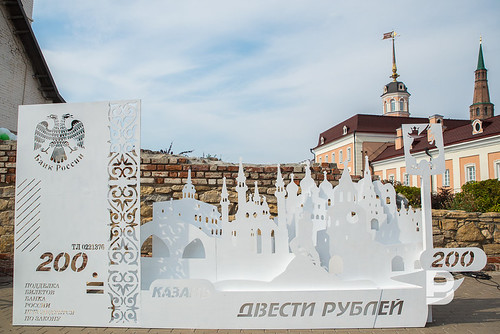
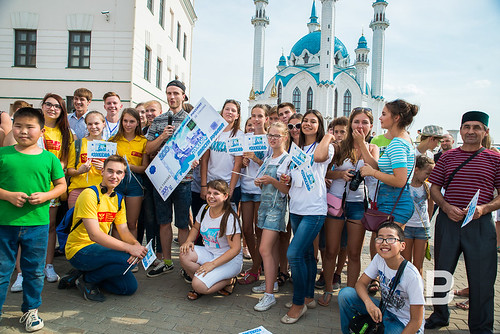
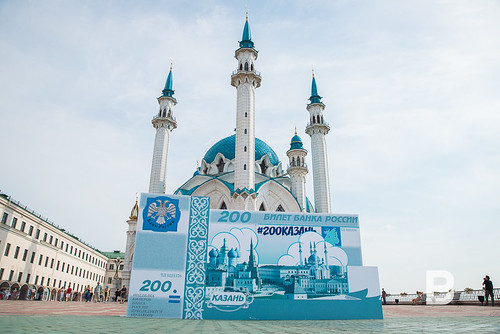
To read the complete article, see:
The new wooden 200-rubles banknote appeared in the Kazan Kremlin
(http://realnoevremya.com/galleries/114)
RAMEN AS CURRENCY IN AMERICAN PRISONS
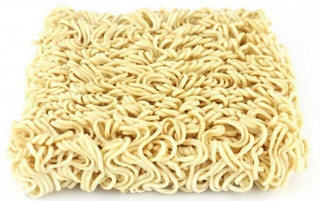 Instant ramen is delicious, easy to cook, ludicrously cheap and surprisingly nonperishable.
Instant ramen is delicious, easy to cook, ludicrously cheap and surprisingly nonperishable.
For all those reasons and more, the noodles are overtaking tobacco as the preferred underground currency that inmates use in prisons, according to a new study by Michael Gibson-Light, a doctoral candidate in the University of Arizona School of Sociology.
"Prisoners are so unhappy with the quality and quantity of prison food that they receive that they have begun relying on ramen noodles — a cheap, durable food product — as a form of money in the underground economy," Gibson-Light said in a news release Monday. "Because it is cheap, tasty and rich in calories, ramen has become so valuable that it is used to exchange for other goods."
Over a year, Gibson-Light interviewed 60 male inmates and staff members in an unidentified state-run facility as part of a larger investigation into how prisoners were responding to declining prison services. He labeled what he found "punitive frugality" — that is, as corrections budgets shrink, the cost of care is shifting onto prisoners and their support networks.
Enter the humble ramen brick.
Inmates often used instant ramen packs to barter for other food items, clothes, hygiene products and even services, Gibson-Light observed. At times, he said, he saw prisoners put down ramen packs, or "soups," as literal bargaining chips during card games. According to the study, one inmate put it succinctly: "Soup is money in here."
Gibson-Light said he noted that the move away from a "luxury" currency such as cigarettes occurred even though the prison had not banned smoking or tobacco products. Rather, he wrote that inmates told him they were receiving food deemed "inedible or too little to sustain them for a day."
He noted that the inmates at the prison in question used to receive three hot meals a day, but in the early 2000s, the second meal was changed to a cold sandwich and a small bag of chips. Weekend lunches were eliminated; overall, portion sizes for every meal were reduced, he said.
"It’s 'cause people are hungry. You can tell how good a man’s doing [financially] by how many soups he’s got in his locker. 'Twenty soups? Oh, that guy’s doing good!'" one inmate told Gibson-Light, according to the study. "People will pay more for an envelope when they need to write home to get more soups! Prison is like the streets. You use currency for everything. In here, it’s soups."
"It’s gold. It’s literally gold," Alvarez told The Washington Post. "People will actually — and I hate to say this but — they’ll kill for it, believe it or not."
And like any currency, the value of a ramen pack fluctuated.
"I remember in '92, you could get them for 20 cents a ramen," Alvarez said. "In 2013, the last time I was in prison, they were equivalent to $1 a ramen, sometimes $2."
To read the complete article, see:
‘They’ll kill for it’: Ramen has become the black-market currency in American prisons
(/www.washingtonpost.com/news/wonk/wp/2016/08/23/soup-is-money-in-here-ramen-has-become-the-black-market-currency-in-american-prisons/)
John Mutch writes:
I enjoyed reading the review of Bob Leonard's Curious Currency - and then was surprised to hear this BBC item last night. Ramen as currency - who'da thunk?
To read the complete article, see:
Ramen noodles 'are most valuable US prison commodity', study
suggests (www.bbc.com/news/world-us-canada-37162373)
John adds:
Here's another bit on prison currencies.
To read the complete article, see:
From ramen to sleeping space, the
currencies of prisons around the globe (www.pri.org/stories/2016-08-24/ramen-sleeping-space-currencies-prisons-around-globe)
To read the earlier E-Sylum article, see:
BOOK REVIEW: CURIOUS CURRENCY (www.coinbooks.org/esylum_v19n34a11.html)
FEATURED WEB PAGE: EARLY GIBRALTAR COINAGE
This week's Featured Web Page is on Early Gibraltar Coinage (1802 - 1842), from the Gibraltar National Mint website. Thanks to David Pickup for the link.After the Capture of Gibraltar in 1704, ordinary British Coins started to circulate in the City. However to relieve an acute shortage of small change, a local merchant, Robert Keeling, started issuing copper tokens during 1802. This was, by then, a normal practice by many traders and shopkeepers in Britain.
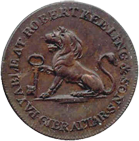
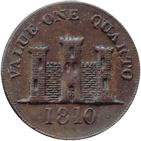
www.gibraltarnationalmint.gov.gi/earlycoins.php

